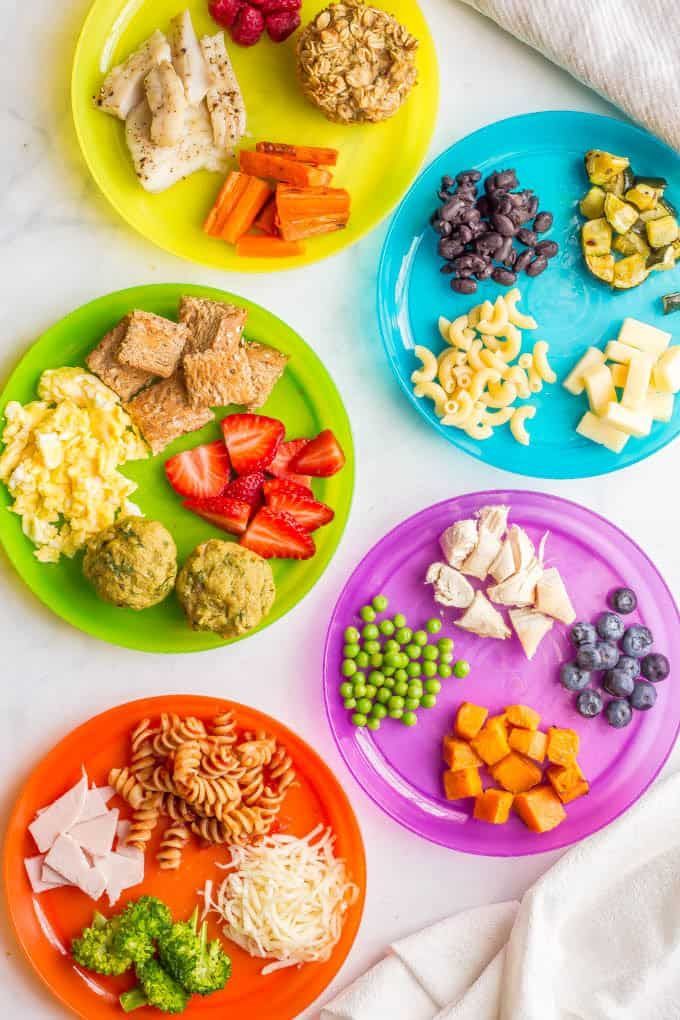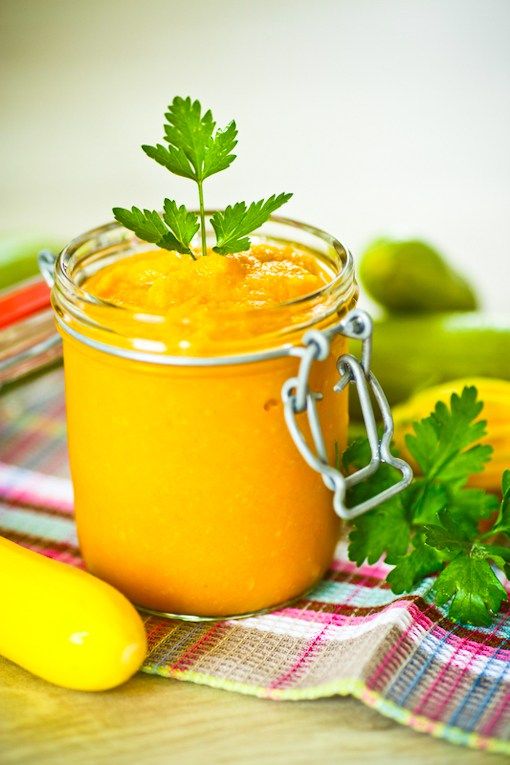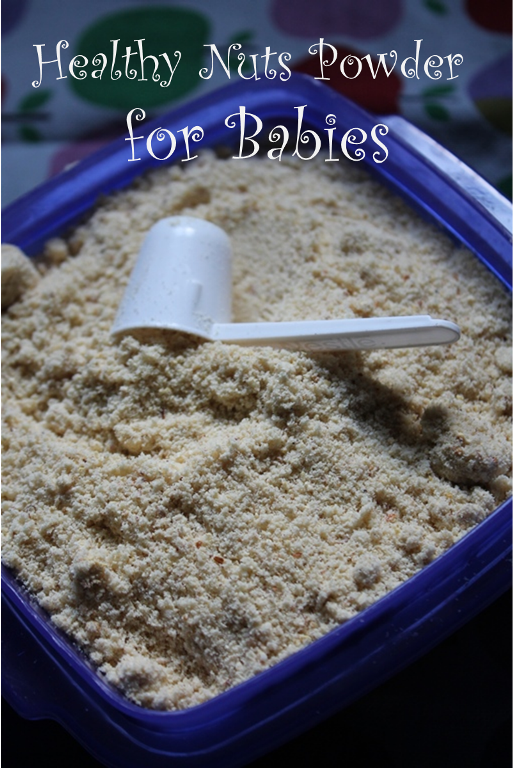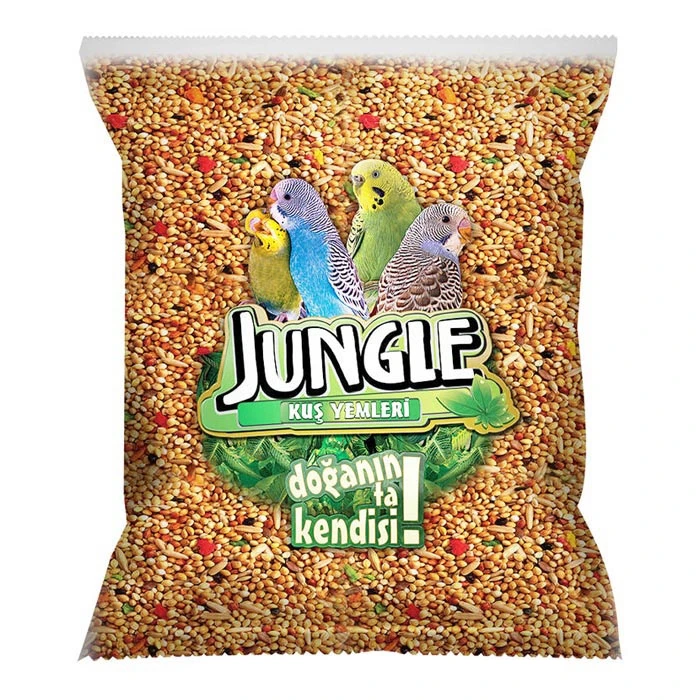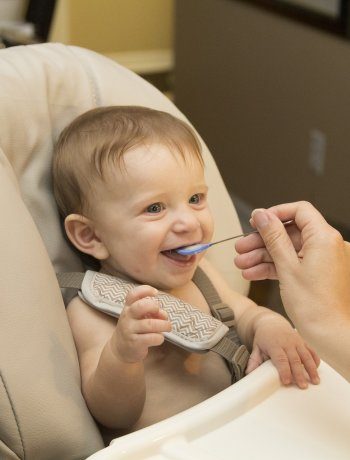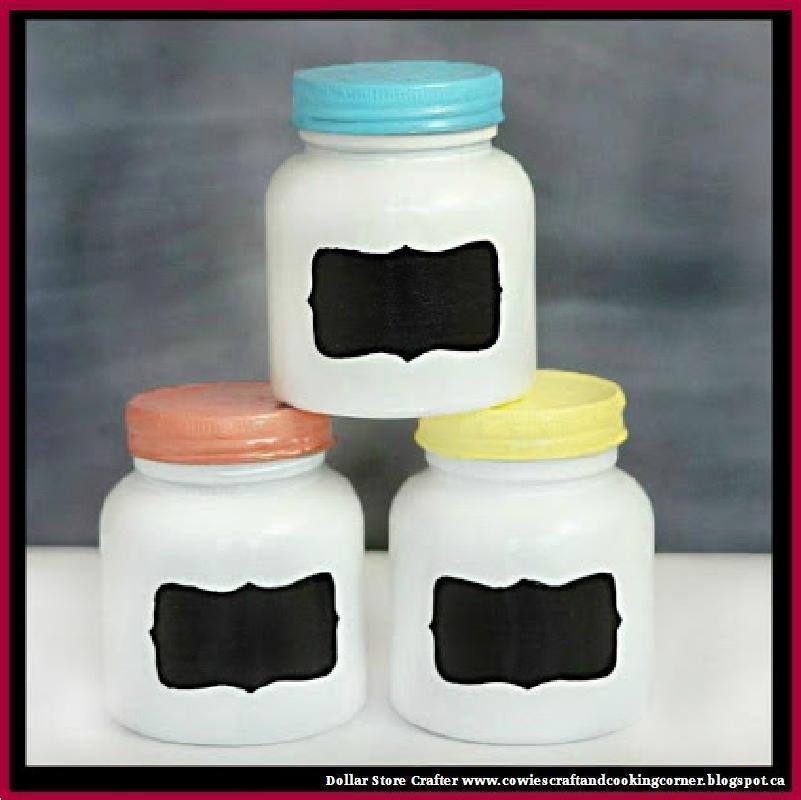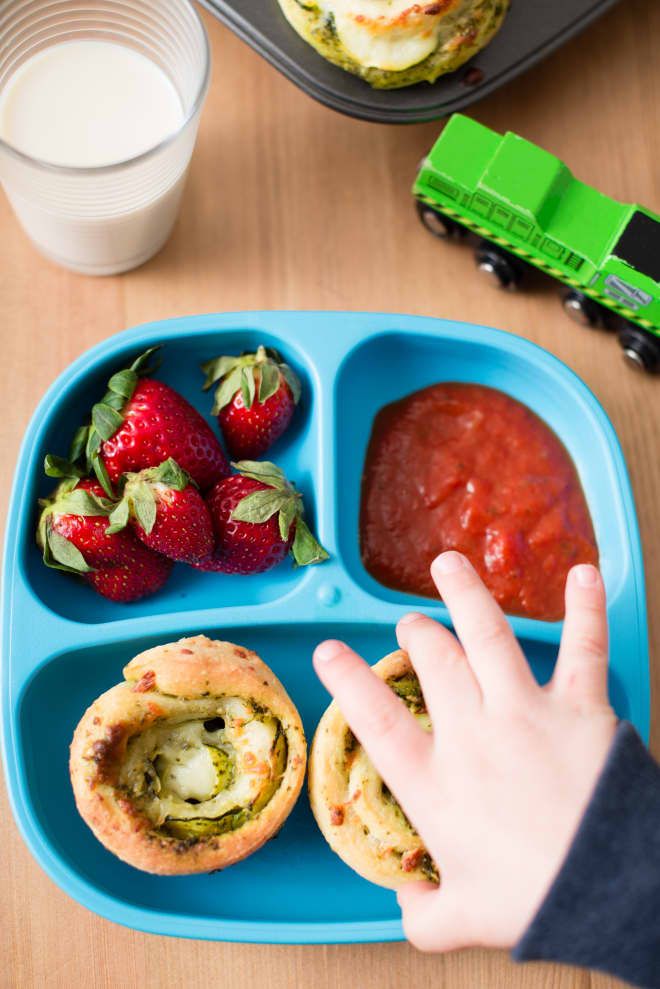Best foods for baby to try first
Best First Foods for Baby (purees & BLW)
These 10 Best First Foods for Baby are perfect either as a baby food puree or as finger foods for baby-led weaning. Full of essential nutrients for a growing baby, these irresistibly delicious recipes are great for babies 6+ months of age. What’s more, this guide also contains 6 tips for getting started and more than 30 easy-to-follow recipes!
Medically reviewed by Jamie Johnson, Registered Dietitian Nutritionist (RDN), and Lauren Braaten, Pediatric Occupational Therapist (OT).
Best First Foods for Baby
Looking to serve your baby the best foods right from their very first bite?
Then this guide is for you! Filled with 10 of my all-time favorite foods for baby, all in one place!
These 10 wholesome foods are packed with vital nutrients for a growing baby, are full of flavor, and are hassle-free to make into a simple baby food puree or finger food for baby-led weaning. Plus, the ingredients are relatively easy to find in any grocery store.
- Apple
- Broccoli
- Salmon
- Egg
- Sweet Potato
- Yogurt
- Avocado
- Banana
- Squash
- Green Beans
Let’s take a closer look into each of these mouthwatering foods, shall we?
First time making homemade baby food? Then, I would suggest that you start by reading my very in-depth Guide on how to Make Homemade Baby Food – which goes over all the important information such as the best cooking tools to have on hand, safe storage, how to know when baby is ready for solids, how to introduce purees, the best first foods for baby, and more! If you are doing Baby-Led Weaning, then be sure to check out my Complete Guide to Baby-Led Weaning – which covers what exactly is baby-led weaning, to every parent’s concern of baby-led weaning and choking, this guide goes over it all.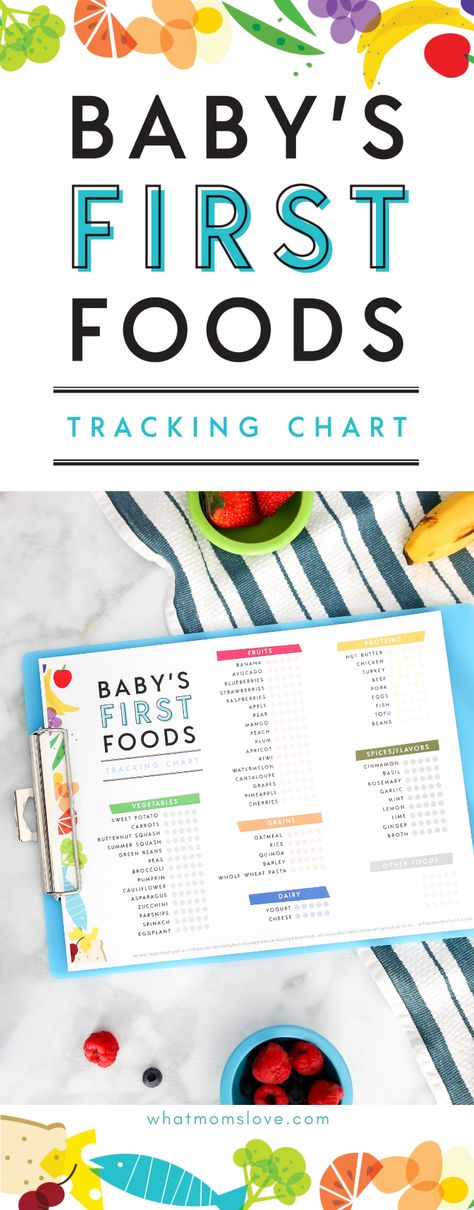 I will also share how to know when baby is ready for BLW, the top 10 best first foods, a helpful sample blw feeding schedule, helpful tools to have on hand, and much much more! You can also check out my best-selling cookbook for even more information and recipes!
I will also share how to know when baby is ready for BLW, the top 10 best first foods, a helpful sample blw feeding schedule, helpful tools to have on hand, and much much more! You can also check out my best-selling cookbook for even more information and recipes!
Best Foods for Baby Video
Watch this video to see how easy these 10 foods are to make for your baby.
When Is Your Baby Ready For Their First Bite?
Whether you decide to go with traditional weaning (purees), baby-led weaning or a combination of both, look for these readiness signs in your baby:
- Around 6 months of age
- Sitting with minimal assistance
- Good control of their head and trunk
- Bringing hands and toys to their mouth
- Appears interested in food, possibly by reaching for or leaning forward towards food
Before you start weaning your baby, you should consult with your pediatrician to make sure your child is developmentally ready.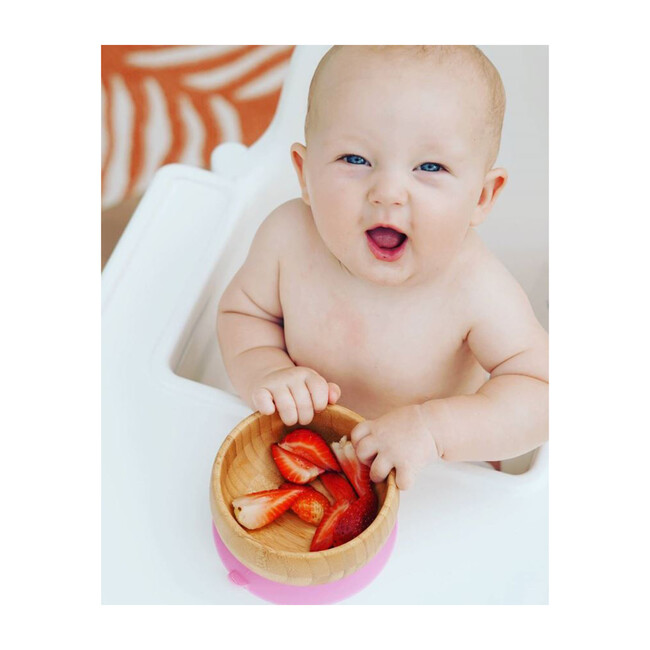
Tips for Getting Started
- Start Slowly – Start by serving a small amount of one food item to your baby once or twice a day to see how they will react. If they are reaching for more, then, by all means, give them more. If they keep tossing it on the floor or refusing to open their mouths, then take that food away and try again in a couple of days. It takes some time before they are eating entire meals.
- Cut Up Finger Foods – To avoid choking hazards, make sure you are cutting finger foods for baby-led weaning into long, 2-3 inch strips or small, mashable, pea-sized pieces. Usually, babies starting baby-led wearing prefer using their palmar grasp (holding onto the long 3″ piece of food), but you can also cut the food both ways to see which one your baby prefers.
- Be Patient – It might take a while for your baby to get into their eating groove. They may also love the idea of eating but get more food on the floor than in their mouths.
 Babies might even seem interested in food but then turn their heads every time a spoon comes near their lips. It’s frustrating, I get it! But keep on serving healthy foods and be patient.
Babies might even seem interested in food but then turn their heads every time a spoon comes near their lips. It’s frustrating, I get it! But keep on serving healthy foods and be patient. - Eat as a Family – Whether you are doing purees or baby-led weaning, eating as a family promotes healthy food habits right from the start. By eating with your baby, you show them how to bring food from a plate to your mouth, chew, and swallow. And when babies see their mom or dad eating the same thing as they are, they are more likely to eat it!
- Mix It Up – Please do not take these 10 foods and serve them to baby all at once and for every meal. Sure, they are loaded with nutrients and flavor for a growing baby. But babies also need to be exposed to various fruits, veggies, grains, and meats. So mix things up and try to serve them different items each week.
- Add Seasoning – I definitely recommend serving food with spices, herbs, and added healthy fats (refined coconut oil, high-quality olive oil, or butter).
 Not only do healthy fats aid in brain development and keep babies full up for longer, but they also make food taste way better! Fats are also needed to help absorb the fat-soluble vitamins A, D, E, and K.
Not only do healthy fats aid in brain development and keep babies full up for longer, but they also make food taste way better! Fats are also needed to help absorb the fat-soluble vitamins A, D, E, and K.
Purees vs. Baby-Led Weaning
Regardless of what you read or hear, there is no right or wrong way to feed your baby.
Purees might work better for your family because you can prep a ton of purees in an afternoon and have a freezer stash of food ready for your baby to eat anytime they are hungry.
Perhaps Baby-Led Weaning might be a more flexible way to serve food to your baby right alongside everyone else.
Or maybe a combo of purees and baby-led weaning would work best.
Either way, it’s important to remember that this stage of feeding is all about exposure to new flavors and textures of foods.
So, you do you!
Again, there is NO right way to feed your baby! Play around and find out what works best for both your baby and family and go with it.
Kitchen Tools
Here are my favorite kitchen essentials to make the best homemade baby foods for your baby! These kitchen tools will help make the process of cooking, blending, and freezing baby food hassle-free. You can find a full list of my favorite baby food-making tools in my online Shop.
- Blender or Food Processor
- Freezer Storage Tray
- Fridge Storage Containers
- Stasher Bag
- Baking Sheet
- Steamer Basket
- Medium Saucepan
- Reusable Pouches
- easy to hold fork and spoon
- GOOtensils
- High Chair
- Suction Bowl and Spoon Set
- Bib with Food Catcher
Avocados are often called one of nature’s superfoods because they contain so many nutrients a person needs to survive and thrive.
Benefits of Avocado for Baby
They are packed with all the B vitamins (minus B12), vitamin C, a wide array of minerals and are high in brain-building omega-3 fatty acids.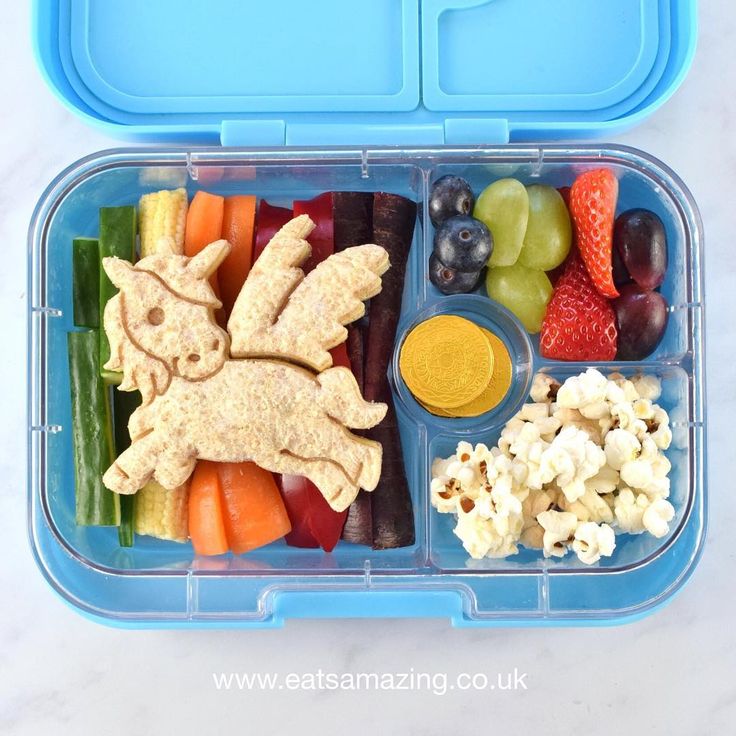 In fact, 88% of an avocado is made up of healthy fats, helping us absorb certain fat-soluble vitamins, control blood sugar, and support a healthy cardiovascular system. In other words, avocados are so nutritious; they are also ideal as the first food for your baby.
In fact, 88% of an avocado is made up of healthy fats, helping us absorb certain fat-soluble vitamins, control blood sugar, and support a healthy cardiovascular system. In other words, avocados are so nutritious; they are also ideal as the first food for your baby.
How to Make Avocado Baby Food Puree
Make sure to read the recipe card below for full ingredients and instructions!
- Peel and pit a quarter of a ripe avocado and place it on a cutting board.
- With the back of a fork, mash the avocado until smooth.
- If needed, you can add a teaspoon or two of formula or breast milk to make the puree extra smooth and creamy.
How to Serve Avocado for Baby-Led Weaning
Make sure to read the recipe card below for full ingredients and instructions!
- Cut a slice of avocado off of the pit.
- Using a small knife, cut into the peel 1/3 of the way up the slice of avocado until you get to the flesh.
- Peel off 2/3 of the peel and hand your baby the peel side of the avocado.
 This provides a nice handle for babies to hold while they eat the avocado.
This provides a nice handle for babies to hold while they eat the avocado.
Want more avocado recipes? Get 4 more ways to serve avocado to baby here!
EggEggs are another amazing first food for babies and can be served any time of the day.
Benefits of Eggs for Baby
Egg yolks are packed with choline, an important nutrient for your baby’s brain development, and the whites are excellent sources of protein. Pasture-raised eggs are a good course of brain-boosting Omega-3s.
How to Make Egg Baby Food PureeMake sure to read the recipe card below for full ingredients and instructions!
- Hard-boil an egg, then peel away the shell and white part.
- Place the cooked egg yolk on a cutting board or baby-safe plate.
- Using the back of a fork, mash the egg yolk until smooth, adding a teaspoon or two of breast milk or formula if needed to make it creamy.
Make sure to read the recipe card below for full ingredients and instructions!
- Peel a hard-boiled egg and cut it into quarters the long way.
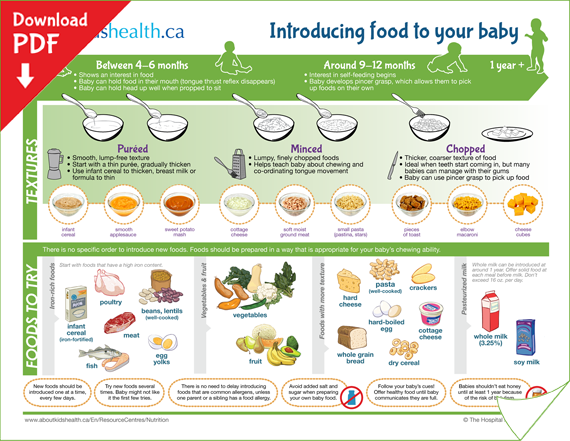 Scrambled eggs, plain omelets, or egg roll-ups also work great as finger food for babies.
Scrambled eggs, plain omelets, or egg roll-ups also work great as finger food for babies. - Place the egg quarters on baby’s highchair tray or in a bowl.
Sweet Potato
Sweet potatoes are also at the top of my list when it comes to the first foods to introduce to babies. The nutritional value of sweet potatoes is outstanding, and their naturally sweet taste makes them easy to introduce to your baby.
Benefits of Sweet Potato for Baby
Sweet potatoes are also high in beta-carotene and vitamin C and the ultra-important electrolyte mineral, potassium! Sweet potatoes also contain good levels of vitamin E, calcium, and folate. Due to their high fiber content, sweet potatoes helps support a healthy digestive tract and promote regular bowel movements for your baby.
How to Make Sweet Potato Baby Food Puree
Make sure to read the recipe card below for full ingredients and instructions!
- Peel and chop 1-2 sweet potatoes.
- Place them in a steamer basket over boiling water and steam for 10-12 minutes or until tender when pricked with a fork.

- Add cooked sweet potatoes to a food processor or blender, and puree for 1-2 minutes until completely smooth, adding water, fresh breast milk or formula, in 1/4 cup increments if needed. I had to use 1 cup of water for the puree above.
- For more sweet potato recipes your baby can enjoy, visit these posts: Sweet Potato + Curry Baby Food Puree, Sweet Potato + Thyme Baby Food Puree, and Sweet Potato with Coconut Milk Baby Puree.
How to Serve Sweet Potatoes for Baby-Led Weaning
Make sure to read the recipe card below for full ingredients and instructions!
- Peel and slice the sweet potato into long strips that are half an inch thick.
- Place wedges a steamer basket and steam for 8-10 minutes or until tender when pricked with a fork. Remember, you want them soft but not overcooked. Overcooked sweet potatoes tend to fall apart when babies fist them.
- Let them cool and serve to baby. This recipe will last 5 days in the fridge.
Want more sweet potato recipes? Then head over to Sweet Potato for Baby – 6 Delicious Ways
Apples
Apples are a yummy, nutrient-dense first food for babies too.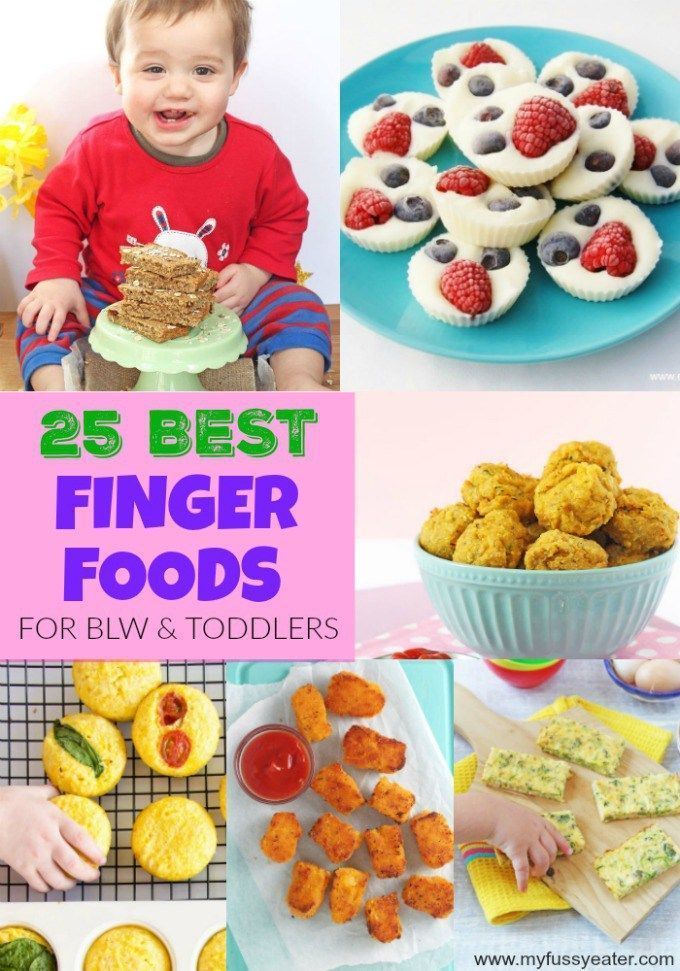 They’re easy to digest, high in immune-boosting nutrients, and perfectly sweet on their own.
They’re easy to digest, high in immune-boosting nutrients, and perfectly sweet on their own.
Benefits of Apples for Baby
We’ve all heard the saying “An apple a day…” well, there may be some truth to this — apples are high in polyphenols and phytonutrients, which are potent antioxidants that help protect babies and kiddos from disease and illness. In addition to antioxidants, apples contain insoluble and soluble fiber, helping protect babies from diarrhea and constipation.
How to Make Apple Baby Food Puree
Make sure to read the recipe card below for full ingredients and instructions!
- Peel and chop 2-3 apples and place them in a steamer basket over boiling water and cook for 8-10 minutes or until tender when pricked with a fork.
- Transfer the apples to a blender and puree for 1-2 minutes or until smooth, adding liquid (water, fresh breastmilk, or formula) in 1/4 cup increments if needed.
- For more amazing apple puree recipes, check out Apple + Cinnamon Baby Food Puree, Apple + Clove Baby Food Puree and Apple + Coconut Milk Baby Food Puree.
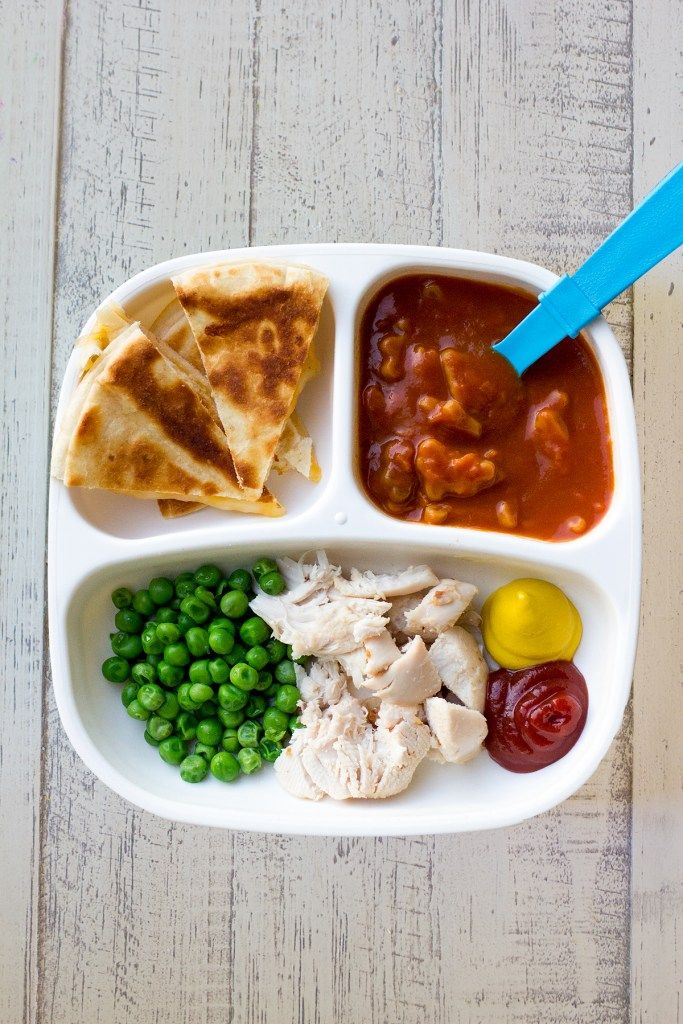
How to Serve Apples for Baby-Led Weaning
Make sure to read the recipe card below for full ingredients and instructions!
- Peel and slice an apple and place in a steamer basket over boiling water for 6-8 minutes or until just tender when pricked with a fork. You want the slices soft but not falling apart.
- Let them cool and serve to baby. You may also add a pinch of cinnamon to the apple slices before serving, but this is optional. Steamed apple slices will last in the fridge for 3 days.
- Add a squeeze of lemon juice to prevent them from browning.
Broccoli
Broccoli is definitely one of the best first food choices for your baby.
Benefits of Broccoli for Baby
This green cruciferous veggie has been shown to lower cholesterol, aid in detoxification, rebuild vitamin D stores, and help combat inflammation. Steaming ensures the broccoli retains the most nutrients and that it won’t become too mushy — a characteristic many kiddos frown upon.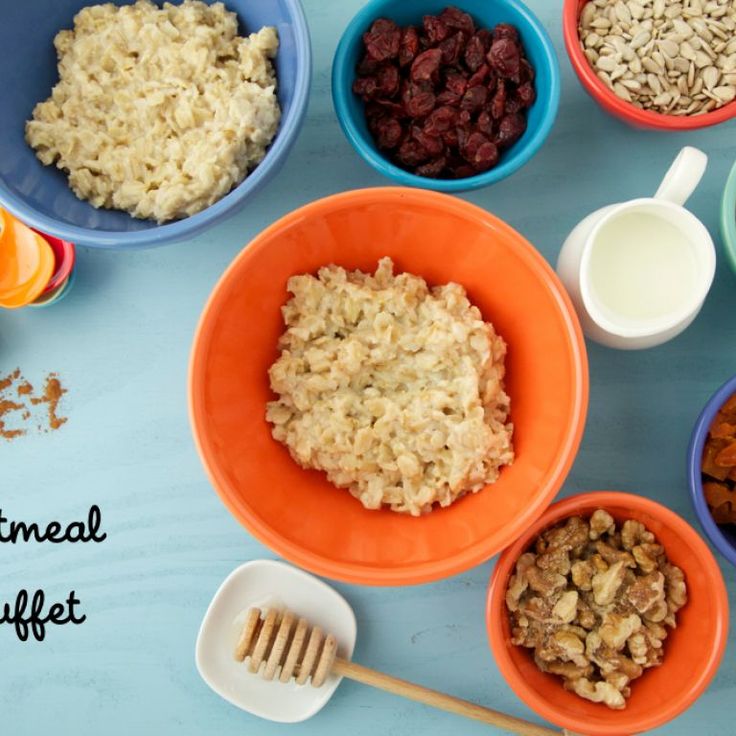
How to Make Broccoli for Baby Food Puree
Make sure to read the recipe card below for full ingredients and instructions!
- Place 2 cups of broccoli florets in a steamer basket over boiling water and steam for 10-12 minutes until tender.
- Transfer to a blender and puree for 1-2 minutes, adding 1/4 cup of liquid (water, fresh breastmilk, or formula) until you have a creamy puree.
- Here are some more amazing broccoli recipes: Broccoli + Chives Baby Food Puree and Broccoli + Olive Oil Puree Baby Food Recipe.
How to Serve Broccoli for Baby-Led Weaning
Make sure to read the recipe card below for full ingredients and instructions!
- Place a cup of broccoli florets into a steamer over boiling water and steam for 8-10 minutes or until tender when pricked with a fork.
- Let them cool and serve to your baby in florets or chopped up into pea-sized pieces. Here is a recipe for my fav roasted broccoli for baby.
Wild-caught salmon is one of the world’s healthiest foods and believe it or not, is a great first food for baby.
Benefits of Salmon for Baby
This is because it is packed with vitamins and minerals like vitamins D and B-12 and omega-3 fatty acids. In fact, salmon is one of the best sources of omega-3s! Combined, these nutrients help improve bone health, boost brain function, promote a healthy heart, and reduce ADHD symptoms in children.
How to Make Salmon Baby Food PureeMake sure to read the recipe card below for full ingredients and instructions!
- I used grilled salmon as that is what I had on hand, but any cooked salmon would work. Place 1/4 cup of cooked salmon along with 1 cup of cooked sweet potato or squash into a blender and puree for 1-2 minutes, adding 1/4 cup of liquids (water, fresh breast milk, or formula) until smooth.
- You can use any fruit or veggie your baby prefers in this recipe. Adding another veggie to the puree also helps the salmon blend into a nice, smooth puree.
Make sure to read the recipe card below for full ingredients and instructions!
- Flake some cooked salmon onto a baby-safe plate or their high chair tray, making sure to pick off any bones.
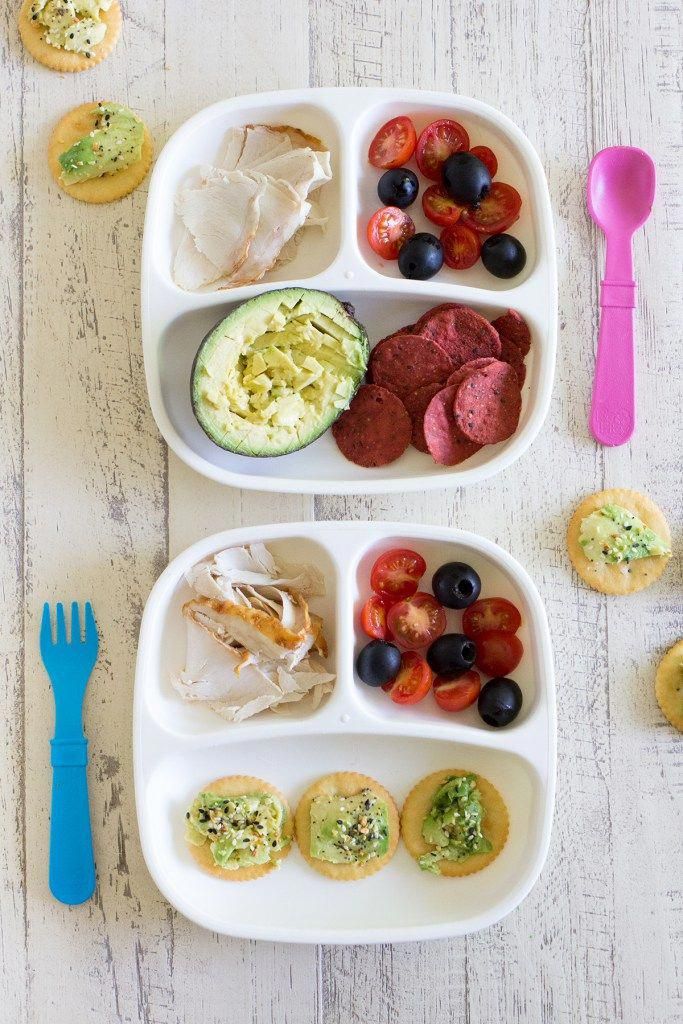 Let your baby eat them with their hand or with this baby-led weaning fork.
Let your baby eat them with their hand or with this baby-led weaning fork.
Yogurt
Plain, whole milk yogurt is a tasty first food for your baby and is great served by itself or mixed into other purees.
Benefits of Yogurt for Baby
Produced by the bacterial fermentation of cow’s milk, yogurt is full of beneficial probiotics that improve digestion and constipation that help keep our gut in good working order. Yogurt is also high in protein (especially Greek or skyr varieties) and calcium, helping our bones and teeth stay healthy and strong.
Whole milk yogurt is recommended over low fat because fat helps with brain development. Plus, fat and protein can help maintain fullness for longer. Yogurt has also been shown to help improve blood sugar control (the plain variety, not the sweetened, fruit, or vanilla flavored) and help reduce total cholesterol levels while increasing our “good” HDL cholesterol. It’s best to avoid any flavored yogurt at this age so your baby does not get too much sugar.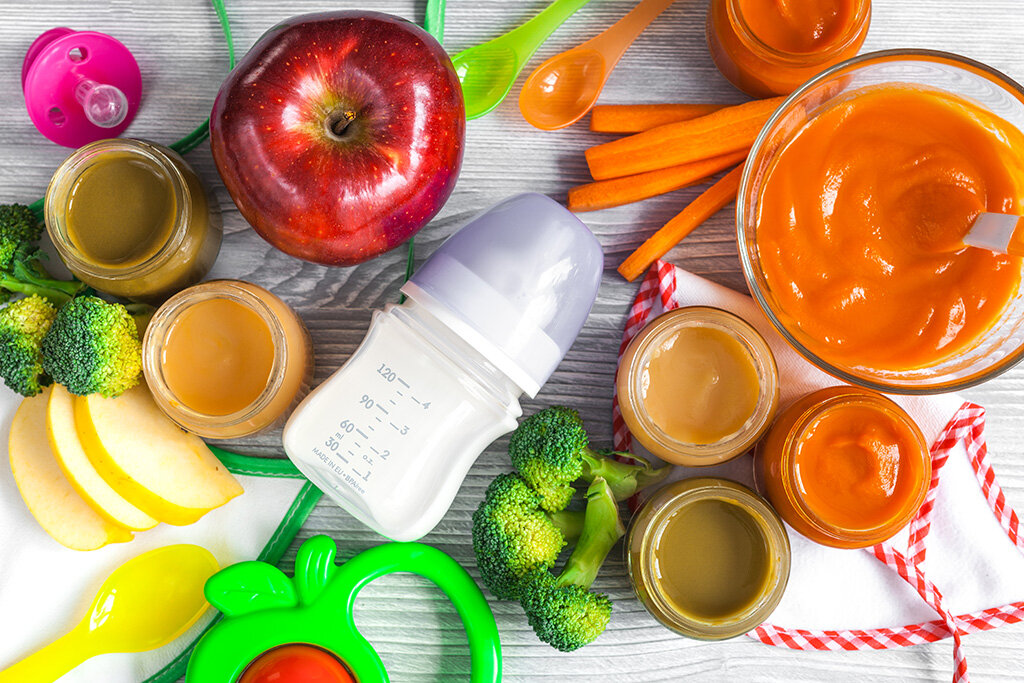 You can also serve your baby plain goat’s milk as a nice alternative to cow’s milk yogurt. I recommend waiting to serve plant-based yogurts to your baby until 7 months, but keep in mind; they will not have the same nutrient profile as dairy yogurts.
You can also serve your baby plain goat’s milk as a nice alternative to cow’s milk yogurt. I recommend waiting to serve plant-based yogurts to your baby until 7 months, but keep in mind; they will not have the same nutrient profile as dairy yogurts.
How to Make Yogurt Baby Food Puree
Make sure to read the recipe card below for full ingredients and instructions!
- Place a small spoonful in a bowl and serve to your baby.
How to Serve Yogurt for Baby-Led Weaning
Make sure to read the recipe card below for full ingredients and instructions!
- Place a small spoonful of yogurt into a bowl, load up this self-feeding GOOtensil with a small amount of yogurt, and hand it to your baby.
NumNum Pre-Spoon GOOtensils
Our favorite spoon for baby! Designed to work great with both purees and soft solid foods, the spoon holds onto the food and makes it easier for baby to self-feed themselves.
View Product
Banana
Bananas and babies are pretty much synonymous.
Benefits of Banana for Baby
Bananas are sweet, mushy, and easy to digest, so they are ideal as first foods for babies. They are a good source of potassium and fiber, and here’s the best part: you don’t have to peel, chop, steam, or puree them. Just peel, pinch with your (clean) finger, and then serve! Spoons are totally optional. Older babies love to squish bananas on their own with a little pincer grasp. But beware of messy banana on bibs, faces, high chair trays, clothing, the floor, the dog, your hair. Oh, bananas! Many a happy baby has gobbled, gulped, and giggled his way through those first delicious bites of bananas! 🍌
How to Make Banana Baby Food Puree
Make sure to read the recipe card below for full ingredients and instructions!
- Take a ripe banana and peel.
- Place half of it on a cutting board, and mash with the back of a fork until it’s rich and creamy.
Make sure to read the recipe card below for full ingredients and instructions!
- Cut a banana in half, and then gently cut about 2 inches from the stem around the banana.

- Peel the top off, but leave the banana attached to give your baby a handle to hold onto.
- Hand your baby the stem part of the banana for them to hold onto while they eat it.
Looking for more banana recipes for your baby? I’ve got you covered: Banana Baby Food – 8 Ways (Puree & Baby-Led Weaning)
Squash
Squash comes in many delicious varieties and is one of the healthiest first food for babies.
Benefits of Squash for Baby
Delicata, Acorn, Hubbard, Kabocha, and Butternut are all part of the winter squash family and are all high in carotenoids, a special class of antioxidants that may help prevent cancer and inflammation. Winter squash may also help regulate blood sugar, reduce the risk of cardiovascular disease, and improve mood, thanks to its high content of mood-boosting Omega-3 fatty acids. Plus, winter squash has a robust, naturally sweet taste that babies will enjoy year-round.
How to Make Squash Baby Food Puree
Make sure to read the recipe card below for full ingredients and instructions!
- Place cubed squash (any variety) in a steamer basket and steam for 10-12 minutes or until tender when pricked with a fork.

- Transfer to a blender and puree for 1-2 minutes on high, adding liquid (water, fresh breastmilk, or formula) in 1/4 cup increments until creamy. You can use frozen or precut squash to make your life a little easier.
How to Serve Squash for Baby-Led Weaning
Make sure to read the recipe card below for full ingredients and instructions!
- Cut long strips of squash and place them in a steamer basket over boiling water.
- Steam for 8-10 minutes until tender.
- Let them cool and serve. I love using this crinkle cutter to make veggies easier for my baby to grip.
Green Beans
In just one serving of green beans, your baby will be getting a nice big dose of essential nutrients.
Benefits of Green Beans for Baby
Nutrients found in green beans can help prevent various conditions, including asthma, ear infections, and even the common cold and flu! Although green beans have a rich, green color, they also provide your baby with carotenoids, normally found in vibrantly colored orange fruits and veggies.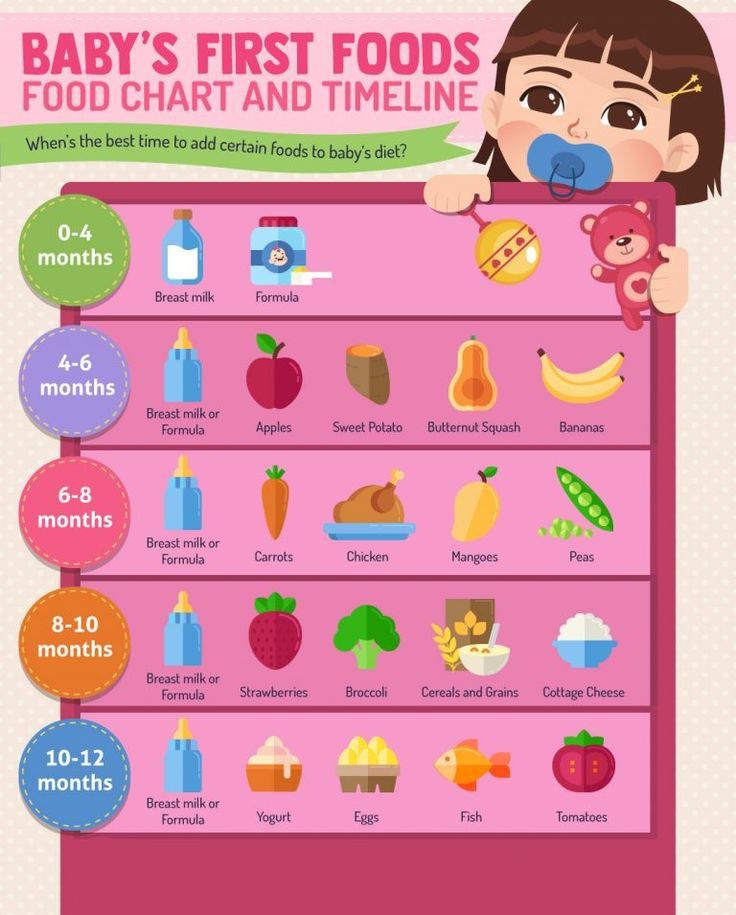 These carotenoids are potent health-supporting antioxidants that will help keep your baby free from illness!
These carotenoids are potent health-supporting antioxidants that will help keep your baby free from illness!
How to Make Green Beans Baby Food Puree
Make sure to read the recipe card below for full ingredients and instructions!
- Place two cups of green beans in a steamer basket over boiling water and steam for 8-10 minutes or until tender.
- Transfer the beans to a blender and puree for 1-2 minutes, adding 1/4 cup liquid (water, fresh breastmilk, or formula) if needed until smooth.
- Here are some more awesome green bean puree recipes: Green Bean + Basil Baby Food Puree, Green Bean + Coconut Oil Organic Baby Food Puree, and Green Beans + Parsley Baby Food Puree.
How to Serve Green Beans for Baby-Led Weaning
Make sure to read the recipe card below for full ingredients and instructions!
- Place a cup of green beans in a steamer basket and steam for 6-8 minutes or until tender when pricked with a fork.
- Let them cool.
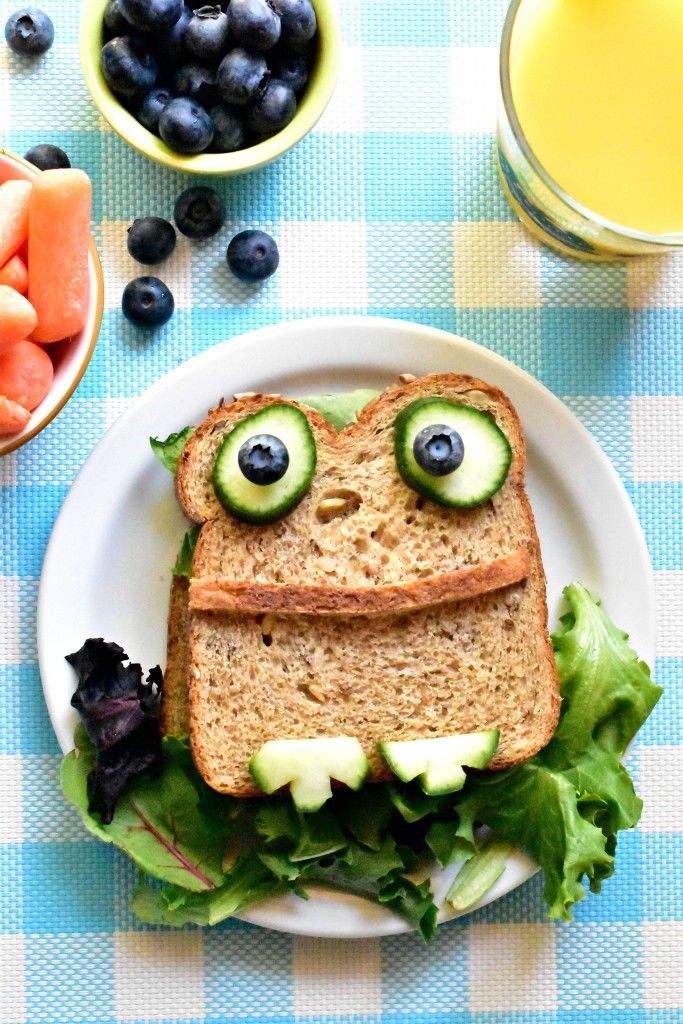
- If they are too long, cut them in half before serving to your baby.
- 1/4 avocado
- 1 large egg
- 1-2 medium sweet potatoes
- 1-3 apples, such as gala, fuji or honeycrisp
- 1-2 cups broccoli florets
- 1/4 cooked salmon
- 1-2 tbsp yogurt, plain whole fat or 2% fat
- 1/2 ripe banana
- 1-2 cups squash
- 1-2 cups green beans, trimmed
Avocado For Baby
For Puree: Simply peel and pit a quarter of a ripe avocado and place on a cutting board. Then with the back of a fork, mash the avocado until smooth.
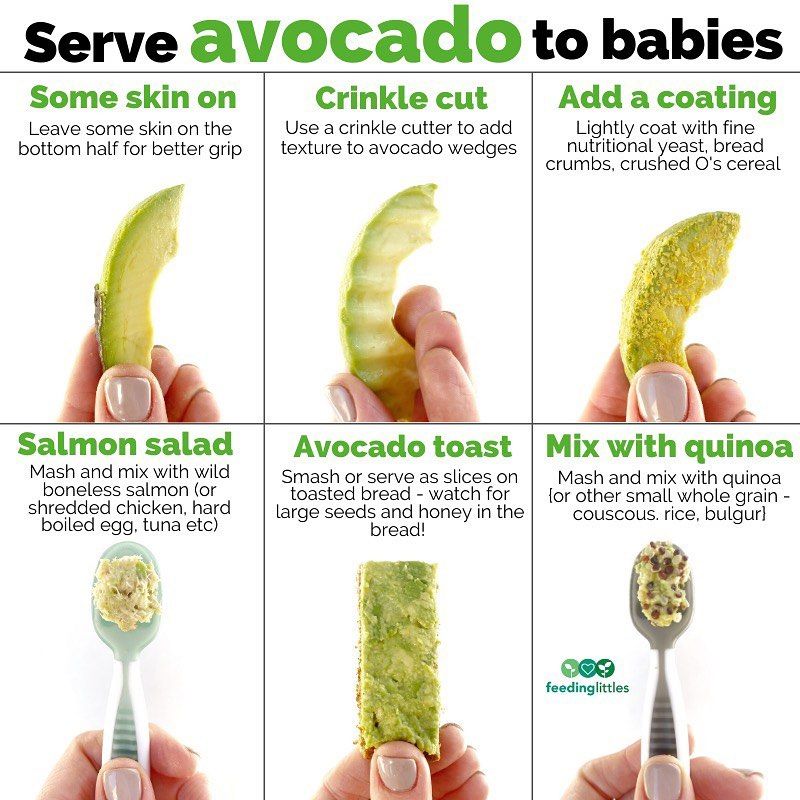 You can add in a teaspoon or two of formula or breast milk to make it super smooth and creamy.
You can add in a teaspoon or two of formula or breast milk to make it super smooth and creamy.For Baby-Led Weaning: Cut a slice of avocado off of the pit. Using a small knife, cut into the peel 1/3 of the way up the slice of avocado until you get to the flesh. Peel off 2/3 of the peel and hand baby the peel side of the avocado. This provides a nice handle for baby to hold while they eat the avocado.
Egg for Baby
For Puree: Using a hardboiled egg, peel away the shell and white part of the egg. Then place the cooked egg yolk on a cutting board or baby-safe plate. Using the back of a fork, mash the egg yolk until smooth, adding in a teaspoon or two of breast milk or formula if needed to make it creamy.
For Baby-Led Weaning: Peel a hardboiled egg and then cut into quarters the long way.
Sweet Potato for Baby
For Puree: Peel and chop 1-2 sweet potatoes.
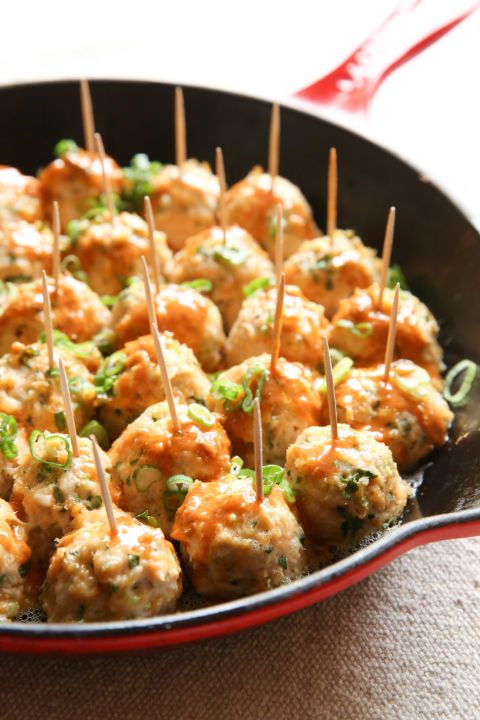 Place in a steamer basket over boiling water and steam for 10-12 minutes or until tender when pricked with a fork. Add cooked sweet potatoes to a food processor or blender, and puree for 1-2 minutes until completely smooth, adding in water in 1/4 cup increments if needed. I had to use 1 cup of water for the puree above.
Place in a steamer basket over boiling water and steam for 10-12 minutes or until tender when pricked with a fork. Add cooked sweet potatoes to a food processor or blender, and puree for 1-2 minutes until completely smooth, adding in water in 1/4 cup increments if needed. I had to use 1 cup of water for the puree above. For Baby-Led Weaning: Peel and slice the sweet potato into long strips that are half an inch thick. Place in a steamer basket and steam for 8-10 minutes or until just tender when pricked with a fork. You want them soft but not overcooked. Overcooked sweet potatoes tend to fall apart when baby fists them. Let cool and serve to baby. Will last 5 days in the fridge.
Apple for Baby
For Puree: Peel and chop 2-3 apples and place in a steamer basket over boiling water and cook for 8-10 minutes or until tender. Transfer the apples to a blender and puree for 1-2 minutes or until smooth, adding in liquid (water, breastmilk or formula) in 1/4 cup increments if needed.

For Baby-Led Weaning: Peel and slice an apple and place in a steamer basket over boiling water for 6-8 minutes or until just tender when pricked with a fork. You want it soft but not falling apart. Let cool and serve to baby. Optional – sprinkle a pinch of cinnamon on apple slices before serving. Steam apple slices will last in the fridge for 3 days, add a squeeze of lemon juice to help them from browning.
Broccoli for Baby
For Puree: Place 2 cups of broccoli florets in a steamer basket over boiling water and steam for 10-12 minutes until tender. Transfer to blender and puree for 1-2 minutes, adding in 1/4 cup of liquid (water, breastmilk or formula) until you have a smooth puree.
For Baby-Led Weaning: Place a cup of broccoli florets into a steamer over boiling water and steam for 8-10 minutes or until tender when pricked with a fork. Let cool and serve to baby in florets or chopped up into “pea” size pieces.

Salmon for Baby
For Puree: I used grilled salmon as that is what I had on hand, but any cooked salmon would work. Place 1/4 cup cooked salmon along with 1 cup cooked sweet potato or squash into a blender and puree for 1-2 minutes, adding in 1/4 cup of liquids (water, breast milk or formula) until smooth. You can really use any fruit or veggie your baby prefers in this recipe. Adding another veggie in the puree helps the salmon blend into a nice smooth puree.
For Baby-Led Weaning: Flake some cooked salmon onto a baby-safe plate or their high chair tray, making sure to pick off any bones. Let baby eat with their hand or with a baby fork.
Yogurt for Baby
For Puree: Place a small spoonful in a bowl and serve to baby.
For Baby-Led Weaning: Place a small spoonful of yogurt into a bowl and load up a self-feeding baby utensil with a small amount of yogurt and hand it over to baby.
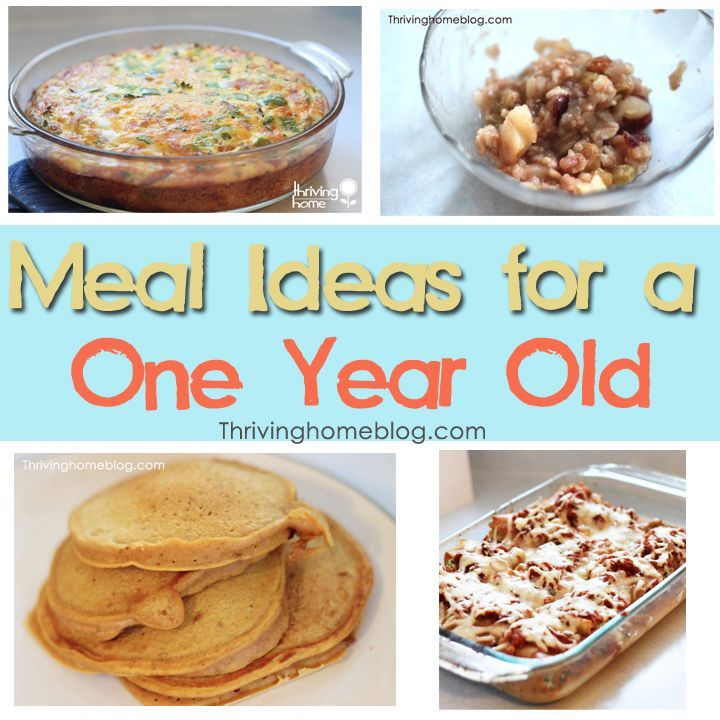
Banana for Baby
For Puree: Place half of a ripe and peeled banana on a cutting board and mash with the back of a fork until smooth.
For Baby-Led Weaning: Cut a banana in half, and then gently cut about 2 inches from the stem around the banana. Peel the top off, but leave the banana attached, thus giving baby a handle to hold onto. Hand baby the stem part of the banana for them to hold onto while they eat the banana.
Squash for Baby
For Puree: Place cubed squash (any variety) in a steamer basket and steam for 10-12 minutes or until tender when pricked with a fork. Transfer to a blender and puree for 1-2 minutes on high, adding in liquid (water, breastmilk or formula) in 1/4 cup increments until smooth. You can use frozen or pre-cut squash to make your life a little easier.
For Baby-Led Weaning: Cut long strips of squash and place in a steamer basket over boiling water.
 Steam for 8-10 minutes until tender. Let cool and serve.
Steam for 8-10 minutes until tender. Let cool and serve.
Green Beans for Baby
For Puree: Place two cups of green beans in a steamer basket over boiling water and steam for 8-10 minutes or until tender. Transfer the beans to a blender and puree for 1-2 minutes, adding in 1/4 cup liquid (water, breastmilk or formula) if needed until smooth.
For Baby-Led Weaning: Place a cup of green beans in a steamer basket and steam for 6-8 minutes or until tender when pricked with a fork. Let cool, cut in half if green beans are too long and serve to baby.
Age: 4+ months (stage one)
Storage: Purees can be stored in an air-tight container in the fridge for up to 4 days, and in the freezer for up to 3 months.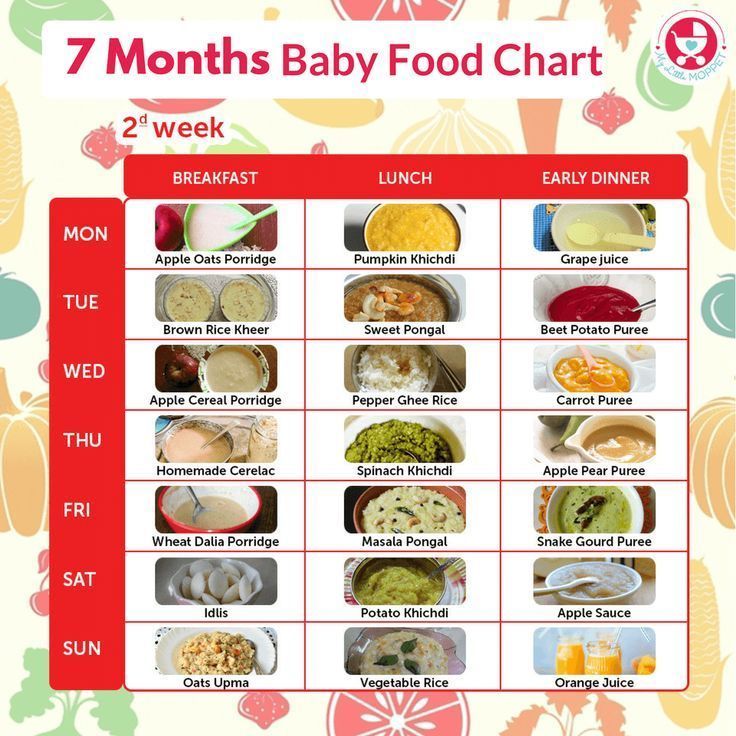 Baby-led weaning foods can be stored in an air-tight container for up to 4 days.
Baby-led weaning foods can be stored in an air-tight container for up to 4 days.
Freezer Tray
Grabease Utensil
Bumkins Baby Bowl
Tripp Trapp High Chair
Did you make this recipe?
Tag @babyfoode on Instagram and hashtag it #babyfoode!
Pin Recipe Email a Friend
The Best First Foods for Babies 6 to 9 Months – Happiest Baby
By Happiest Baby Staff
On This Page
- Best Baby Foods at 6 Months
- Best Baby Foods at 7 Months
- Best Baby Foods at 8 Months
- Best Baby Foods at 9 Months
You've spent the first six months of your baby's life making sure that they are nourished with breastmilk or formula.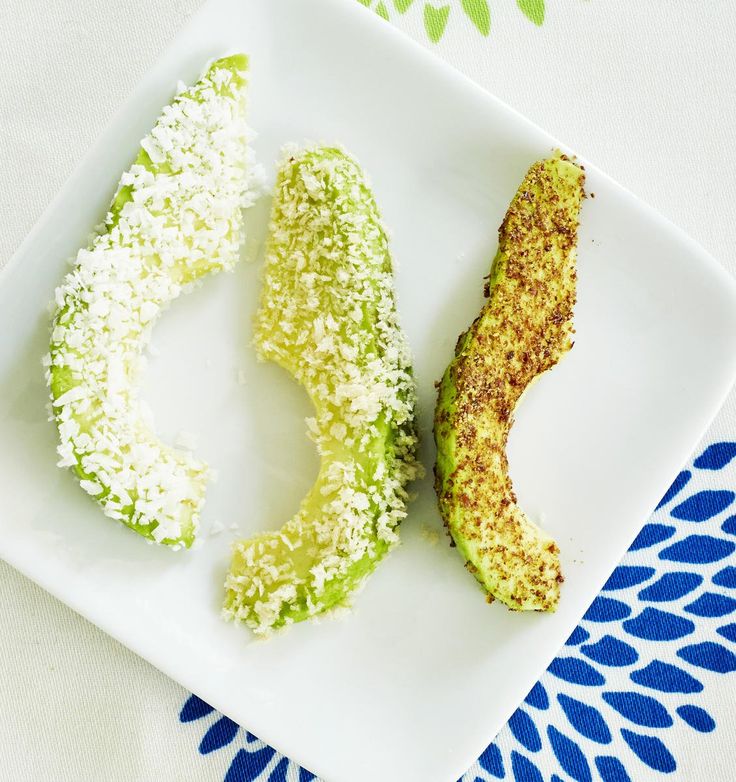 As they grow and thrive, you might notice that your little sprout shows you some signs that they are ready to graduate from the bottle or breast to solid foods. If your baby can sit up and hold their head up, that's a great first sign! What's more, if they bring objects to their mouth and show an interest in what you are eating, your curious kiddo might be ready to start eating solid foods.
As they grow and thrive, you might notice that your little sprout shows you some signs that they are ready to graduate from the bottle or breast to solid foods. If your baby can sit up and hold their head up, that's a great first sign! What's more, if they bring objects to their mouth and show an interest in what you are eating, your curious kiddo might be ready to start eating solid foods.
But what should you feed your baby? Here’s a list of perfect starter foods for your baby from ages 6 to 9 months.
Best Baby Foods at 6 MonthsAt 6 months, babies may be starting to chew. Though this skill won’t be mastered just yet, they are typically ready to get messy with some mushy, pureed eats—helping them learn about flavor and texture. At this age, the goal is not to satiate your baby with full meals of solid foods but rather to get your child curious and excited about their culinary options.
Because babies are growing so fast, their needs for iron are high to prevent iron-deficiency and support their overall health.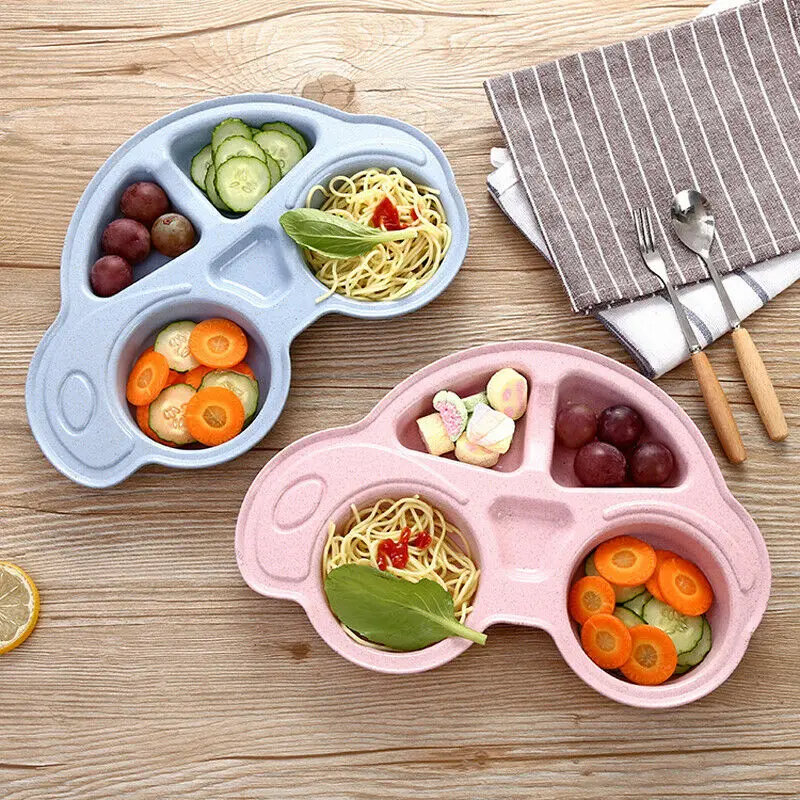 Offer your little one iron rich foods like—infant cereal (read up on why you may want to skip rice cereal), well-cooked meat, poultry, mashed beans, and lentils. To keep your baby safe from choking, avoid adding solids like cereal to baby bottles.
Offer your little one iron rich foods like—infant cereal (read up on why you may want to skip rice cereal), well-cooked meat, poultry, mashed beans, and lentils. To keep your baby safe from choking, avoid adding solids like cereal to baby bottles.
Here are some great first foods for Baby to try:
- Infant oat, grain, or barley cereals mixed with breastmilk or formula and spoon-fed to your baby
- Sweet potato puree
- Squash puree
- Pea puree
- Carrot puree
- Mashed banana
- Mashed avocado
- Mashed or pureed beans
- Mashed or pureed lentils
- Pureed meats (beef, chicken, or turkey)
- Soft, falling apart meats (salmon, beef, chicken, turkey)
Check out more of our favorite first food purees. Or, if purees aren’t your thing, read up on how to start baby-led weaning.
Best Baby Foods at 7 MonthsBy 7 months old, your baby will probably be eating more solids but not enough to replace breastmilk or formula as their primary source of food. The goal for this month is to keep introducing solid foods to your baby. What's fun is by 7 months, you can get more creative with mixing flavors and adding textures.
The goal for this month is to keep introducing solid foods to your baby. What's fun is by 7 months, you can get more creative with mixing flavors and adding textures.
Here are a few nutritious and delicious food combos to try with your baby:
- Peas pureed with breastmilk (or formula), sweet potatoes, or squash
- Kale pureed with blueberry, squash, potatoes, sweet potatoes, peas, pears, or bananas
- Apples pureed with cauliflower, carrots, pears, prunes, or beets
- Beef pureed with broccoli
- Chicken pureed with carrots and potatoes
- Chickpeas pureed with bananas, apples, or sweet potato
- Sweet potatoes pureed with red bell pepper
Seven months is also the perfect age to start giving your baby a plate, bowl, and plastic utensils so they can begin to practice feeding themselves. If your baby is teething, you can place frozen chunks of fruit in a sieve feeder/mesh bag that allows them to gnaw on the fruit without choking. Learn more about helping your baby use a fork and spoon!
Learn more about helping your baby use a fork and spoon!
By 8 months, your baby is likely eating more solids and relying a little less on milk as a primary meal (though it’s still where they get the bulk of their nutrition!). And they’re probably having lots of fun learning how to use their hands to feed themselves. Something else to consider: Babies should be exposed to potential allergen foods (like peanuts, tree nuts, eggs, and fish) before their first birthdays to help prevent future food allergies. Starting at 6 months of age, peanut butter is safe to introduce as long as you are comfortable giving it to your baby.
In fact, the Dietary Guidelines for Americans says that babies can begin having these foods when they start eating solids. But many families often feel more comfortable waiting to introduce these foods until around this age. Of course, consult with your little one’s pediatrician if you have concerns about potential allergen foods.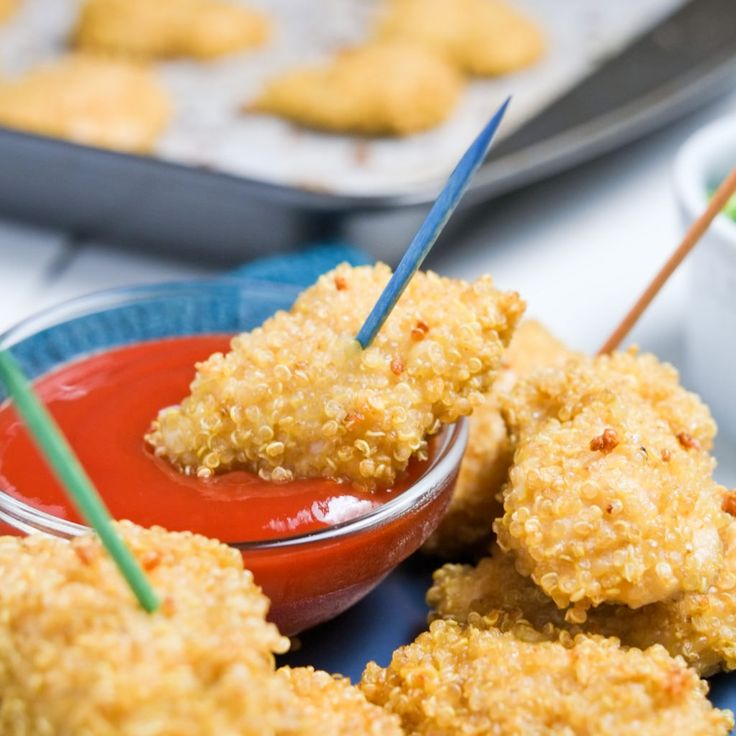
Here are some foods to add to your repertoire:
- Whole eggs, scrambled
- Nut butter thinned out with water and mixed with cereal (nut butters are sticky and can cause choking)
- Fully cooked fish, like salmon or tuna
- Full-fat yogurt
Here are some preparation ideas:
- Well-cooked (think over-cooked until falling apart) pasta such as elbows or alphabet shapes
- Mashed meat with mashed or ground vegetables such as peas and potatoes or kale and squash
- Rainbow on a plate: Using tiny pieces of soft, strained, pureed, and mashed food options, look for a variety of colors to offer. Some fun options could include banana, avocado, sweet potato, peas, blueberry, raspberry, cheese, and chicken.
Though there’s a greater variety of foods babies eat now, formula or breastmilk continues to be their primary source of nutrition until age 1. At 9 months old, babies get more comfortable with self-feeding and eating the foods their families enjoy. After all, eating solid foods is a sensory wonderland of texture, smells, and tastes. Not to mention all that fun making messes with those adorably curious fingers.
After all, eating solid foods is a sensory wonderland of texture, smells, and tastes. Not to mention all that fun making messes with those adorably curious fingers.
As you begin to focus on meal planning for your baby, there are few things to keep in mind:
- Babies need four to five servings of fruits and vegetables a day. A serving size for a 9-month-old is less than a quarter cup.
- "Eat the rainbow" is excellent advice because it gives your baby exposure to lots of different fruits, vegetables, grains, and starches.
Here are a few menu ideas to help meal plan for your baby…
Breakfast Ideas for Babies
These morning meals pack a nutritional punch—and don’t forget to check out all of our favorite breakfast ideas for babies:
- Soft fresh fruit cut up in small pieces (think: banana, raspberries, or blueberries)
- Whole-grain waffles or pancakes
- Unsweetened oatmeal made with breastmilk or formula combined with cut-up and cooked apples and pears or banana slices.
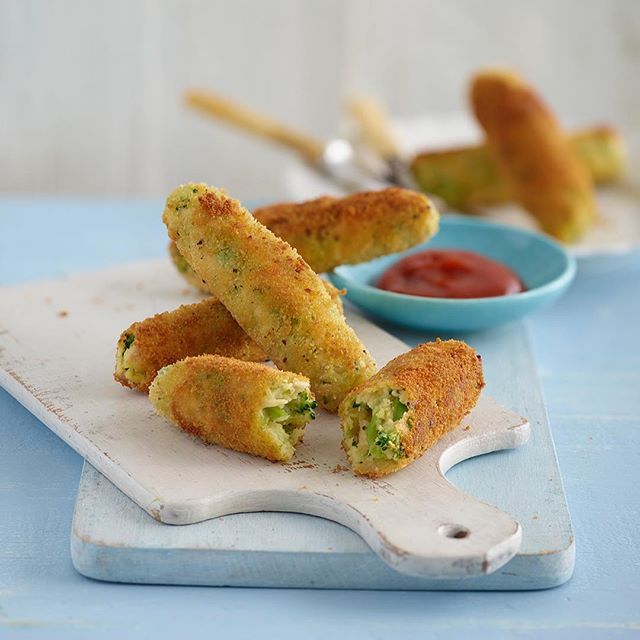 (It is essential to steam the apples or pears to make them soft enough for your baby to mash with their gums.)
(It is essential to steam the apples or pears to make them soft enough for your baby to mash with their gums.) - Full-fat yogurt mixed with mashed or pureed berries such as blueberries, blackberries, strawberries, or raspberries
- Soft scrambled eggs
- Veggie frittata
Lunch Ideas for Babies
- Spread hummus on soft crackers or bread
- Grilled cheese sandwich with cooled tomato soup
- Macaroni and cheese with cooked veggies like peas and carrots mixed in
- Pizza bites with chopped bits of spinach in the sauce and melted shredded cheese
- Quesadilla made with pureed spinach, squash, or beans
Snack Ideas for Babies
Babies this young won’t likely need to snack too much (remember, breastmilk or formula will provide the majority of your little one’s nutrition). Still, it’s not a bad idea to have snacks on hand for when your mini muncher needs something to eat that’s not quite a meal. A few baby snack ideas:
- Apple and carrot slaw
- Cheese slices
- Full-fat plain yogurt
- Hard-boiled egg
- Avocado slices
- Muffins made with fruits, veggies, and/or whole grains
- Fruit and veggie pouches
- Sugar-free, whole-grain cereal, like plain Cheerios
Dinner Ideas for Babies
To help your baby get and stay excited about eating solid foods, serve a version of whatever the family is having for dinner.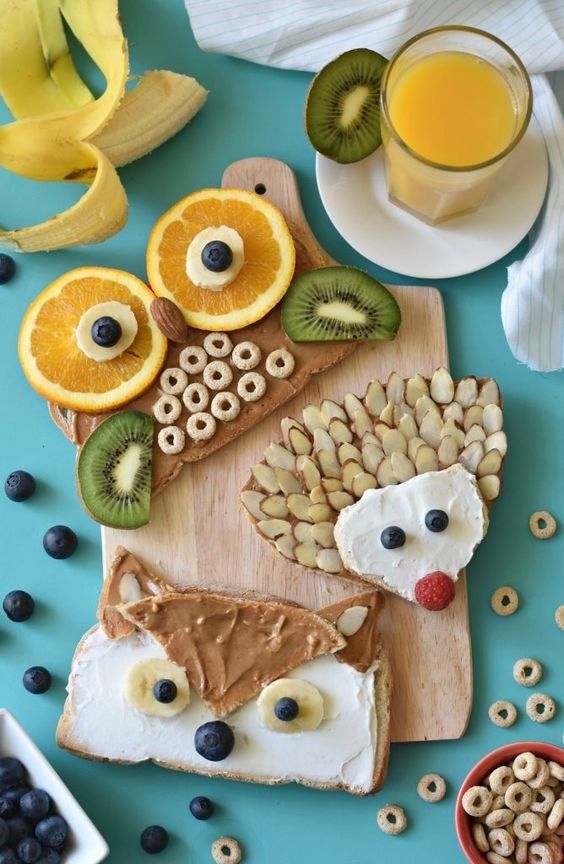 Remember to steam or mash, grind or chop foods into appropriate softness and sizes to prevent choking. Some baby dinner ideas:
Remember to steam or mash, grind or chop foods into appropriate softness and sizes to prevent choking. Some baby dinner ideas:
- Pasta with softened vegetables
- Well-cooked rice, soft veggies, and chicken
- Baked sweet potato with butter or cheese
- Beans or lentils served with rice and veggies
- Flaky fish served with steamed zucchini
There are endless variations on what you can serve your baby for dinner. As long as your baby is safe and happy, try to encourage lots of food exploration!
You must not feed any child under the age of 1 year honey, cow’s milk, juice, hard foods like candy, raw vegetables, popcorn, or sticky foods like peanut butter, as these each present choking hazards.
Learn more about feeding your baby:
- The Happiest Baby Feeding Guide
- The Benefits of Homemade Baby Food
- The Best Store-Bought Baby Food
***
REFERENCES
- Unlocking Opportunities in Food Design for Infants, Children, and the Elderly: Understanding Milestones in Chewing and Swallowing Across the Lifespan for New Innovations.
 Journal of Texture Studies, August 2017
Journal of Texture Studies, August 2017 - Complementary Feeding: A Position Paper by the European Society for Paediatric Gastroenterology, Hepatology, and Nutrition (ESPGHAN) Committee on Nutrition, Journal of Pediatric Gastroenterology and Nutrition, January 2017
- Infant Formula Feeding Practices Associated With Rapid Weight Gain: A Systematic Review, Maternal & Child Nutrition, July 2018
- Solid Food Introduction and the Development of Food Allergies, Nutrients, November 2018
- US Department of Agriculture: Dietary Guidelines for Americans 2020-2025
View more posts tagged, feeding
Have questions about a Happiest Baby product? Our consultants would be happy to help! Connect with us at [email protected].
Disclaimer: The information on our site is NOT medical advice for any specific person or condition. It is only meant as general information. If you have any medical questions and concerns about your child or yourself, please contact your health provider.
It is only meant as general information. If you have any medical questions and concerns about your child or yourself, please contact your health provider.
Top 10 useful products for a student. Cooking articles and life hacks
The new school year requires high mental activity from children, and physical activity is added to it in the form of sports training and the same road to school. Vitamins and energy are what every child needs for comfortable learning.
First of all, you should organize a competent daily routine for the student, where there is a place for rest and inspiration, as well as provide the child with a healthy balanced diet. The first is the responsibility of the parents, and with the second we will help you.
In a new article, we share the most healthy foods for children and offer as many as 30 recipes with them!
Fish
Fish contains omega-3 fatty acids, without which neither the gray matter of the brain nor the nervous system as a whole can function properly.
Yes, we know that not all children like fish. But it is necessary to include it in the diet of the student. Of course, you do not need to force the child to eat the product, we recommend that you arouse keen interest with the help of a personal example, games or inventive dishes. We offer you some ideas.
Jellied mini pies with pink salmon.
Salad with salmon and mozzarella.
Fish balls with onions and carrots.
Meat
Meat contains a large amount of protein, which acts as a building material for tissues and organs of a growing organism. Animal protein cannot be replaced by any other substances. Therefore, in the diet of a child, ideally, meat should be present: turkey, chicken or beef.
In addition, amino acids, phosphorus, B vitamins contained in meat are important for the stability of the nervous system and visual acuity.
Chicken cutlets "Klubochki".
Stuffed pasta with béchamel sauce.
Turkey fillet baked with spices.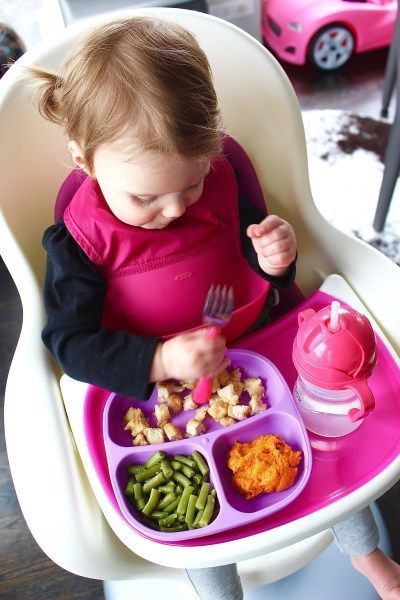
Broccoli
This vegetable contains a lot of vitamin K, which improves brain function. Also, broccoli is high in boron, the lack of which can lead to a decrease in brain activity.
Experts also recommend adding Brussels sprouts or regular white cabbage to a child's diet. Some of these may be of interest to your student.
Broccoli soup with croutons.
Casserole with turkey and Brussels sprouts.
Cabbage rolls with meat in a slow cooker.
Carrot
In addition to the positive effect on vision, carrots are useful in developing memory, as they actively stimulate the metabolism throughout the body, including the brain. So if your child has to learn poetry or the multiplication table, introduce this incredibly healthy vegetable into the student's diet.
Funchoza with fresh vegetables.
Carrot cake with sour cream and lemon impregnation.
Vegetable pie "Autumn Sun".
Eggs
Eggs are a very good natural antioxidant rich in vitamins and minerals. The yolk has a lot of healthy fats that have a beneficial effect on mental activity. And the substance choline, which is part of the product, helps to properly build the work of the nervous system.
The yolk has a lot of healthy fats that have a beneficial effect on mental activity. And the substance choline, which is part of the product, helps to properly build the work of the nervous system.
Also let's not forget about protein. Its content in eggs, as well as in meat, is high.
Turkish omelet.
Snack egg muffins.
Scramble eggs with slightly salted salmon.
Nuts
In terms of vitamins and nutrients, nuts are superior to many vegetables and fruits. Potassium, calcium, magnesium, phosphorus, iron and other minerals can all be found in any kernel, but the walnut is considered especially valuable. It has a high content of polyunsaturated fatty acids, which are necessary for the full functioning of the brain. Five large walnuts is a daily allowance to help you think fast.
Aubergine rolls with nuts.
Oatmeal cookies with raisins and walnuts.
Chicken with pumpkin, onions and walnuts.
Grapes
Red grapes improve the nutrition of brain cells and protect them from destruction. It contains fiber, fructose, ascorbic acid, vitamin B, enzymes, pectin, and a large amount of potassium.
It contains fiber, fructose, ascorbic acid, vitamin B, enzymes, pectin, and a large amount of potassium.
By the way, in September you can buy the freshest bunch of red grapes in the market or in the supermarket.
Fragrant muffins with red grapes and dor blue.
Salad with avocado and black grapes.
Grape jelly.
Cocoa
Cocoa beans contain a trace element necessary for good memory functioning - magnesium. Therefore, freshly brewed hot cocoa for breakfast will provide the student with mental energy for the whole day. Cocoa also improves blood circulation, vasodilation and improves mood.
As for chocolate, which contains cocoa, it is better to offer the child dark - it is much more useful.
The world's best chocolate cake.
Buckwheat cookies with dates.
Chocolate chia pudding.
Dairy products
Cottage cheese, milk, yogurt and cheeses are rich in calcium. Children continue to grow, and calcium is just needed for growth and strong bones.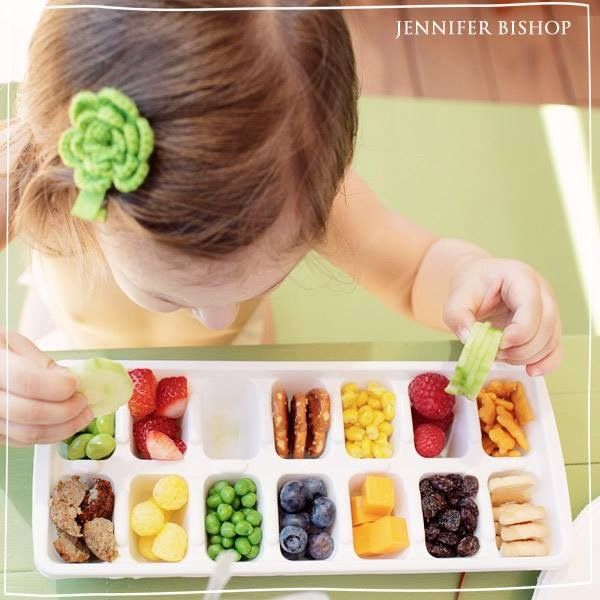 Almost any fermented milk product can be taken with you to school for a snack. But do not forget to study the composition: the simpler and clearer it is, the better. And if the shelf life of the product does not exceed 7 days, this is what you need.
Almost any fermented milk product can be taken with you to school for a snack. But do not forget to study the composition: the simpler and clearer it is, the better. And if the shelf life of the product does not exceed 7 days, this is what you need.
Vareniki with cottage cheese.
Cheesecakes on semolina.
Kutabs with herbs and cheese.
Honey
Unique product! Almost all the substances that make up its composition are useful for the human body. Honey is a powerful source of energy, is responsible for brain function and memory tenacity, and also improves immunity. A spoonful of honey a day will be enough for a child. In addition, you can cook different dishes with it.
Honey granola.
Children's banana ice cream.
Chicken wings baked with honey and nuts.
Dear parents, include all the most healthy foods for schoolchildren in your children's menu and cook according to our recipes. On the Eat at Home website you will find even more interesting selections!
what foods children should not eat and how to teach them to eat right?
Proper nutrition of children is underestimated by many. After all, our parents, grandparents somehow grew up without this knowledge. But in fact, the older generations, who grew up in conditions of total scarcity, did not have to fight temptations. They just didn't exist. And the products that were available were much more suitable for the definition of proper nutrition than the food that children now eat. And it's not even about fast food, the dangers of which are known to almost everyone. Nutritionists and other children's doctors spoke about what foods children should not eat and how to teach them to eat right in an interview with MIR 24.
After all, our parents, grandparents somehow grew up without this knowledge. But in fact, the older generations, who grew up in conditions of total scarcity, did not have to fight temptations. They just didn't exist. And the products that were available were much more suitable for the definition of proper nutrition than the food that children now eat. And it's not even about fast food, the dangers of which are known to almost everyone. Nutritionists and other children's doctors spoke about what foods children should not eat and how to teach them to eat right in an interview with MIR 24.
“Nutrition is one of the main factors determining the normal development of a child, it has the most direct impact on his growth and health,” says pediatrician, senior medical consultant of Teledoctor 24 Maria Mamedova . - It is most important to observe the principles of rational nutrition in children of early and preschool age. This period is characterized by intensive growth processes, improvement of the functions of many organs and systems, especially the nervous system, enhanced metabolic processes, and the development of motor activity.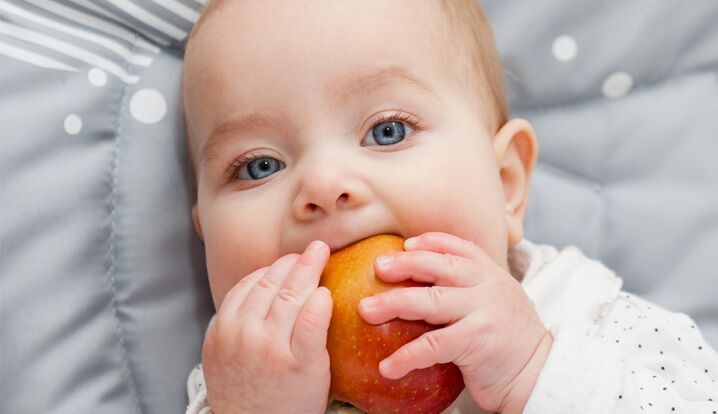
What not to eat for babies and preschool children
Vinogradov pediatrician Vladislav Zyablitsky , in addition to harmful foods for children of all ages, pediatricians emphasize foods that children under 3 years old should not eat. Here they are.
- Seafood such as shrimp, mussels, crabs (allergic).
- Sausages, sausages, sausages (overflowing with flavors, dyes, preservatives).
- Lamb, fatty pork, meat of waterfowl (geese and ducks) - contain an excessive amount of refractory fats of animal origin.
- Melon and grapes (increase gas production and increase the load on the pancreas).
- Everyone's favorite treat is ice cream (it has an increased level of fat content, sugar content, harmful additives that can cause allergies).
- Honey if the child is prone to food allergies.
- "Adult" non-adapted milk (dangerous with allergies, problems with the gastrointestinal tract, reduced immunity of the child's body, metabolic disorders, atherosclerosis and arterial hypertension in the future).

- Cakes, cakes, sweets, chocolate, puff or shortbread cookies, other confectionery. They are crammed with food additives, sugar, fat, but contain almost no nutrients.
- Cocoa - due to the increased fat content of the drink and the invigorating alkaloid theobromine.
- Do not give tomatoes until 1 year of age (they overload the kidneys).
- Only after 1.5 years is it permissible to give the child garlic, onions, bell peppers in small amounts.
- Pickled cucumbers and pickled tomatoes should not be given until 2 years of age (due to bacteria).
- Nuts, especially peanuts (very strong allergens).
- Celery (excessively activates the activity of the pancreas).
- Red and black caviar is forbidden up to 5 years (very allergenic, includes preservatives; contains excess salt, which is fraught with kidneys). For the same reason, salted fish is prohibited.
- Mushrooms - the child's body does not contain enough enzymes to digest them.
 In addition, mushrooms accumulate radioactive substances and heavy metals.
In addition, mushrooms accumulate radioactive substances and heavy metals.
Strictly not recommended for all children, regardless of age: salty crackers, chips, french fries, hamburgers and other fast food.
“The best way to avoid a child's love for such food is not to go to places where it is sold. Confidently walk past the bright signs of fast food restaurants, ignore the aroma of pies in a kiosk near the subway, forget about noodles and instant soups. After all, this food is a direct path to obesity, diabetes, to malfunctions of the immune and cardiovascular systems,” says Maria Mammadova. The pediatrician adds a few more to the list of products prohibited for preschoolers.
- Semi-finished products . It is fast, convenient, but not useful for children whose gastrointestinal tract is imperfect - the processes of digestion, the production of enzymes and bile in preschool children are still immature. The nutritional value of semi-finished products is a dubious question, and one can only guess about the qualitative composition of their components.
 For the production of semi-finished products, vegetable proteins are often used, which are inferior to meat and fish in terms of amino acid composition. Excess salt in ready-made semi-finished products creates an unnecessary burden on the child's kidneys, food additives provoke allergies, spices irritate the gastrointestinal mucosa, starch and soy are poorly digested, causing functional disorders of the digestive system.
For the production of semi-finished products, vegetable proteins are often used, which are inferior to meat and fish in terms of amino acid composition. Excess salt in ready-made semi-finished products creates an unnecessary burden on the child's kidneys, food additives provoke allergies, spices irritate the gastrointestinal mucosa, starch and soy are poorly digested, causing functional disorders of the digestive system. - Minced meat for children's food is best prepared by yourself, as the store-bought often contains a lot of fat, connective tissue, and bird skin. The same applies to minced fish: it is prepared from low-value fish varieties, and only a production specialist can control the quality of the product.
- Sausages . Some parents sometimes replace a full-fledged meat or fish dish on the children's table with sausages - for the same reasons of saving time. The cost of a kilogram of the most optimal quality sausages is almost equal to the price of meat (veal, beef, pork), and sometimes even higher.
 But this does not mean at all that meat of a certain category is present in the composition of the product in the amount stipulated by the regulations. According to GOST, premium sausages consist of beef, pork, powdered milk or cream and eggs. If the product is of a lower grade, then it contains up to 10% trimmed meat, starch and a protein stabilizer. However, on the shelves of shops there are mainly sausages made according to specifications - according to the standards created by the manufacturing enterprise itself. That is why the composition of the product changes and becomes “richer”: various fillers (cheese, paprika), soy, sodium nitrite (color stabilizer) and monosodium glutamate (flavor enhancer), ascorbic and citric acid, as well as salt and spices are added to it. All these components, depending on the concentration in the product, adversely affect the health of the child.
But this does not mean at all that meat of a certain category is present in the composition of the product in the amount stipulated by the regulations. According to GOST, premium sausages consist of beef, pork, powdered milk or cream and eggs. If the product is of a lower grade, then it contains up to 10% trimmed meat, starch and a protein stabilizer. However, on the shelves of shops there are mainly sausages made according to specifications - according to the standards created by the manufacturing enterprise itself. That is why the composition of the product changes and becomes “richer”: various fillers (cheese, paprika), soy, sodium nitrite (color stabilizer) and monosodium glutamate (flavor enhancer), ascorbic and citric acid, as well as salt and spices are added to it. All these components, depending on the concentration in the product, adversely affect the health of the child. - Smoked meat and fish products today are often produced not by the traditional method of smoking, which is also not very useful, but with the use of a special (and very harmful to the human body) substance that gives the product the necessary taste, smell and color.
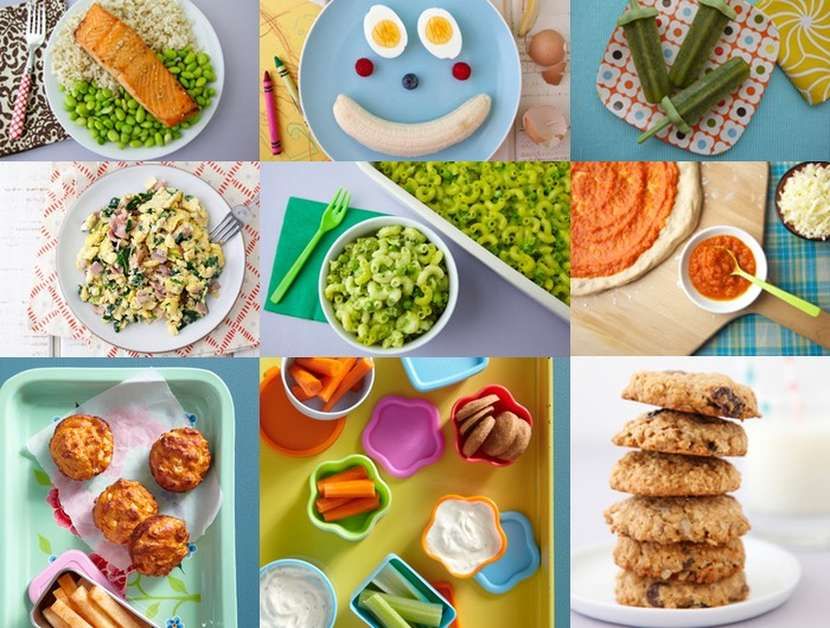
- Carbonated soft drinks . This is a fully synthetic product. And even a certain percentage of natural juice in the composition of some "soda" is not able to compensate for the harm that artificial dyes, preservatives, flavors, sweeteners and carbon dioxide cause to a fragile body. They not only affect the gastrointestinal tract of the child, spoil the tooth enamel, but can also provoke a lot of serious diseases. The best drink for a child is water (clean drinking, from two years old - non-carbonated, but not medicinal), freshly squeezed juice diluted with water, fruit or dried fruit compote, berry juice.
- Vegetables and fruit "out of the can" . There are very few vitamins in products of enhanced heat treatment and long shelf life. Canned vegetables contain a lot of salt and vinegar, fruits - a lot of sugar. And if this is not home preservation, then also synthetic preservatives. Children should be introduced to such products no earlier than seven years.
 It is better to freeze vegetables, fruits and berries in summer and autumn in order to cook delicious vegetable stews, casseroles, berry fruit drinks and fruit desserts in winter. Or buy ready-made frozen products, remembering that the shock freezing method is the most gentle.
It is better to freeze vegetables, fruits and berries in summer and autumn in order to cook delicious vegetable stews, casseroles, berry fruit drinks and fruit desserts in winter. Or buy ready-made frozen products, remembering that the shock freezing method is the most gentle. - Mayonnaise and ketchup . Homemade mayonnaise, a product with a high fat content, can be given to a child only after three years, in small quantities and not systematically. From ready-made mayonnaise, which contains flavors, flavors, dyes, thickeners, stabilizers, emulsifiers and preservatives, it is better to refuse altogether. Ketchup also does not apply to baby food. There are a minimum of vitamins and nutrients in it, hot spices will harm the children's body, and they are produced using all the same preservatives and synthetic additives (to improve color, taste, aroma).
You can, but be careful: from sweets to spices
This group includes products that children, according to Maria Mamedova, can use under certain conditions, although they can only be introduced from the age of three and they should not be present in the diet constantly.
Sweets . Experts believe that chocolate is contraindicated for children under three years old. It creates an extra load on the pancreas, causes allergies, excites the nervous system of the crumbs, and can provoke caries. An alternative to chocolate are sweets made from carob, a sweet powder made from the pulp of carob. It tastes like cocoa, is very healthy and, unlike chocolate, has no "side effects".
The later the child gets acquainted with sweets, the better. But since everything sweet is a source of easily digestible carbohydrates that the body needs, as a dessert, you can occasionally offer your child a little marshmallow, marshmallow, marmalade, jam (while remembering the dangers of synthetic dyes and flavors). It is even better to replace store-bought sweets with berries and fruits, honey (if there is no allergy), dried fruits, sweets and homemade jam.
Flour products . Their regular use provokes excess weight.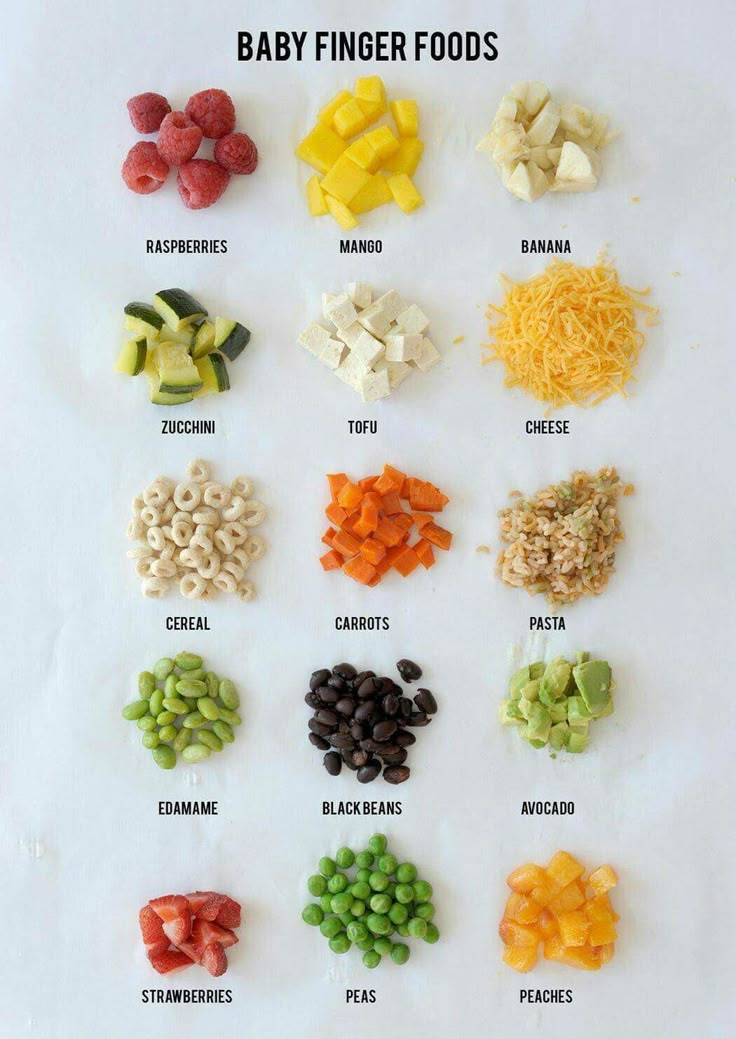 You can sometimes allow your child to eat a bun or a pie (for an afternoon snack), but it is better to limit yourself to biscuit cookies or drying. Products made from puff, shortbread, pastry, which include margarine, should be completely abandoned - its components increase the level of cholesterol in the blood and provoke the development of vascular diseases in the future.
You can sometimes allow your child to eat a bun or a pie (for an afternoon snack), but it is better to limit yourself to biscuit cookies or drying. Products made from puff, shortbread, pastry, which include margarine, should be completely abandoned - its components increase the level of cholesterol in the blood and provoke the development of vascular diseases in the future.
Herbs and spices . They make the taste and aroma of food richer, but seasonings for children's food must be selected very carefully. After a year, greens (dill, parsley, cilantro) can be added to the child’s food, from 1.5-2 years old - onions, garlic (in hot dishes), from 3 years old - bay leaf. Spices used in adult dishes can irritate a child's esophageal mucosa or provoke allergies.
Ready mixes of spices, various flavoring seasonings should not be added to food for a child, because in addition to the main components, they contain a lot of salt and various preservatives.
Instant cereals .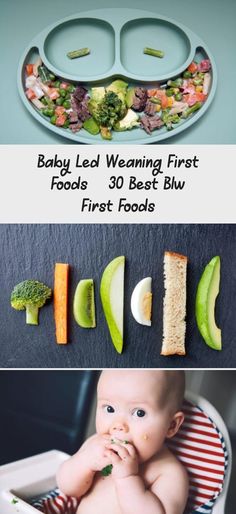 It is very convenient to use them - you do not need to wash the cereal, wait until it is cooked. It is enough just to pour boiling water over a portioned bag, in which everything is already included - sugar, fruit or chocolate, cream or milk. And also - flavors, flavor enhancers and other synthetic additives. The nutrients and vitamins that whole grains contain are lost during the numerous processing steps. Therefore, the use of such porridge in baby food is justified only in emergency cases. For example, on the road - it's still better than eating sausage or fast food.
It is very convenient to use them - you do not need to wash the cereal, wait until it is cooked. It is enough just to pour boiling water over a portioned bag, in which everything is already included - sugar, fruit or chocolate, cream or milk. And also - flavors, flavor enhancers and other synthetic additives. The nutrients and vitamins that whole grains contain are lost during the numerous processing steps. Therefore, the use of such porridge in baby food is justified only in emergency cases. For example, on the road - it's still better than eating sausage or fast food.
How to teach a child to eat healthy food?
“First of all, by example,” says Maria Mamedova. - If the house does not eat junk food, then the child will daily want what he is used to from an early age. Scientists say that even during pregnancy and breastfeeding, the future mother's cravings for certain foods are passed on to the child.
It is important to prepare the right snacks in advance so that children between meals do not grab cookies or candy from the table, but fruit or granulated bran.
Delicious and healthy at the same time.
If there is soda or sweet store-bought juice in the refrigerator, you can give a 100% guarantee that the child will drink it first of all, and not the vital clean water. Therefore, the water filter should be in the most visible place so that it constantly catches the eye.
“Watch what your child eats and praise the correct choice. Focus on those products, the consumption of which leads to health, beauty and excellent sports achievements: depending on what he is passionate about,” says Maria Mammadova.
Healthy substitutes can be found for most unhealthy foods. Potato and corn chips will replace dried fruit slices. Instead of candy, you can eat dried fruits and dried berries. It is important not to confuse with candied fruits, in which there is no less sugar than in candies.
Eating regularly reduces the number of snacks, which means better control of what children eat. If breakfasts, lunches and dinners are held at a common table with adults, then the opportunities to intercept a couple of sweets instead of soup are significantly reduced.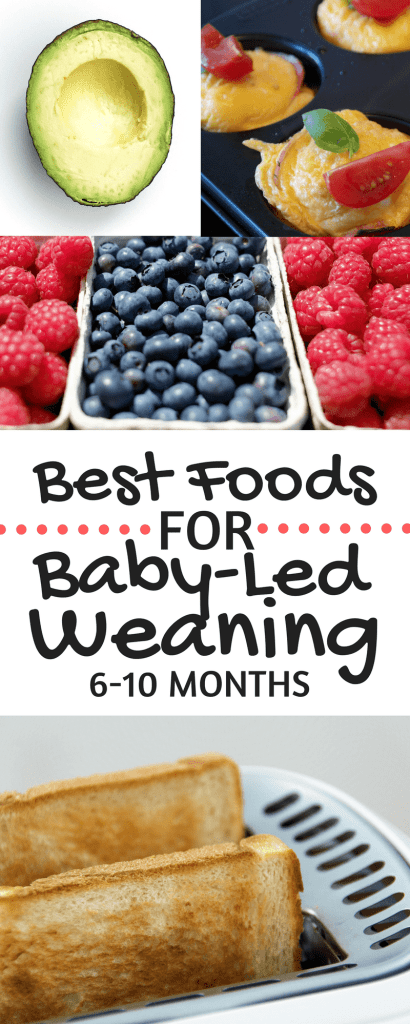 But healthy snacks are also not harmful, this is the key to the good functioning of the digestive system. Make them accessible and child-friendly. What can be used if there is no time to cook?
But healthy snacks are also not harmful, this is the key to the good functioning of the digestive system. Make them accessible and child-friendly. What can be used if there is no time to cook?
- Cut carrots, sweet peppers, cucumbers into containers.
- Popcorn free of artificial additives and saturated fat is a great whole grain snack.
- Pour fruit and vegetable smoothies into small bottles.
- Place the bowl of fruit in the most visible place.
Let the children participate in making the menu so they become more interested in the outcome. It's always nice to get exactly what you ordered, what you like, for dinner. Do not force yourself to eat unloved foods, no matter how useful they may be. You can always find an equally useful replacement. And pay attention to the fact that healthy products are of high quality.
Reduce the amount of simple sugars in your diet. To do this, it is not at all necessary to put the child on a diet - just look at the label of those products that you buy out of habit, not paying attention to the composition.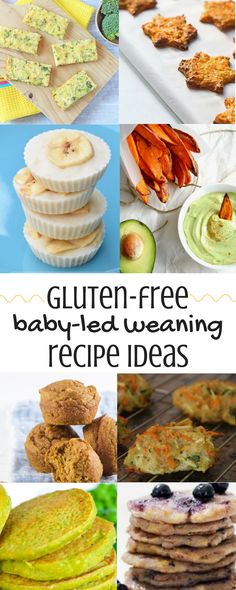
- Replace your traditional loaf with whole grain bread.
- Instead of sweet yoghurt, choose natural yogurt with a fat content of no more than 1-3%.
- Make homemade cookies instead of store bought.
- The best replacements for store-bought drinks are water and fruits or fruit and vegetable smoothies.
- Try to avoid trans fats. They are most commonly found in processed foods, fast food, fried foods, frozen pizzas, pies, cookies, margarines, and sandwich mixes.
- If fried foods are a big part of your diet, try gradually switching to stews, steamed or baked foods.
It is important to maintain a pleasant atmosphere while eating. It is better to postpone the showdown and "debriefing" for another time. TVs and tablets should also be turned off. When a person is busy watching a cartoon or TV show, his brain does not think about food, which adversely affects digestion and leads to obesity.
“By the way, the correct process of eating can be learned from babies,” says Maria Mamedova.
“They only eat when they are hungry, they chew their food thoroughly, giving it all their attention. And they stop eating as soon as they are full. At the same time, children under three years old cannot be forced to eat foods that they do not like. And they choose, as a rule, exactly those that the body needs at the moment.
Schoolchildren and adolescents: six elements of their healthy diet
In school-age children, the need for basic nutrients and energy remains high and is due to physiological and biochemical characteristics: accelerated growth and development, differentiation of various organs and systems, especially the central nervous system, and the intensity of metabolic processes.
“It is important to follow a differentiated approach to determining nutritional needs depending on the type of student's activity,” says Maria Mamedova. - So, for schoolchildren studying in specialized schools with increased mental and physical stress (mathematical, with the study of foreign languages, sports schools, etc. ), the total calorie content of the diet should be increased by 10% of the age norm. During the child's stay in health-improving institutions (holiday camps, forest schools, etc.) due to increased energy consumption (intensive physical education, swimming, hiking, etc.), it is also advisable to increase the calorie content of the diet by 10% with a uniform increase in all nutrients and preservation a balanced diet."
), the total calorie content of the diet should be increased by 10% of the age norm. During the child's stay in health-improving institutions (holiday camps, forest schools, etc.) due to increased energy consumption (intensive physical education, swimming, hiking, etc.), it is also advisable to increase the calorie content of the diet by 10% with a uniform increase in all nutrients and preservation a balanced diet."
According to the expert, a properly established diet is of great importance for school-age children. It is most expedient to establish the following diet: 1st meal - at 8:30; 2nd - at 12:00-13:00, 3rd - at 15:30 - 16:00, 4th - at 19:00. Breakfast and dinner should be 25% of the daily calorie intake, second breakfast - 15%, and lunch - 35% of the daily calorie intake.
If possible, school breakfasts should be hot. If this is not possible, then a milk-fruit breakfast (milk, bun, sweet curd cheese or processed cheese, fresh fruit) can be recommended. Lunch should consist of soup, a second course of meat (fish) and a side dish, a sweet dish (compote, jelly, juice or fresh fruit).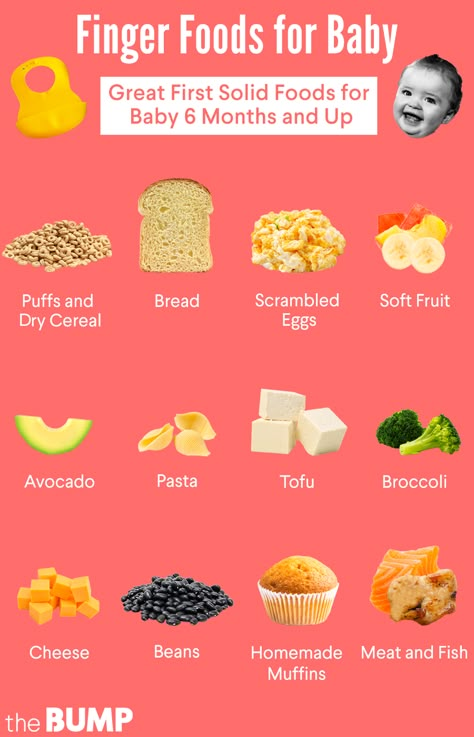 It is desirable that before the first course there is a salad of fresh vegetables or a vinaigrette. A teenager can already be offered radishes, radishes with sour cream or vegetable oil, tomatoes, fresh cucumbers with green onions and sour cream instead of salad before meals. Vegetables stimulate appetite, promote the release of digestive juices and improve digestion.
It is desirable that before the first course there is a salad of fresh vegetables or a vinaigrette. A teenager can already be offered radishes, radishes with sour cream or vegetable oil, tomatoes, fresh cucumbers with green onions and sour cream instead of salad before meals. Vegetables stimulate appetite, promote the release of digestive juices and improve digestion.
According to Maria Mammadova, there are six groups of products that are simply vital for the full growth and development of a teenager.
- Complex carbohydrates . These are the main suppliers of energy, which is so necessary with rapid growth. They are found in cereals and cereals.
- Products containing protein . These are animal meat, poultry and fish. Protein is the main building material for soft tissues and internal organs. And, by the way, meat, especially red meat, contains iron, a lack of which can cause anemia in a teenager.
- Vegetable fiber . It is nothing but vegetables, root vegetables and fruits.
 Fiber is necessary for the normalization of the gastrointestinal tract and cleansing the body of toxins due to the natural antioxidants contained in these products.
Fiber is necessary for the normalization of the gastrointestinal tract and cleansing the body of toxins due to the natural antioxidants contained in these products. - Vegetable fats . These are vegetable oils and various nuts. Eating these foods can be a great way to help a teenager avoid the common problems of hair loss and brittle nails at this age.
- Milk and dairy products . These are irreplaceable suppliers of calcium, vitamin D and phosphorus in the nutrition of adolescents.
- Pure drinking water . For normal functioning of the body, you need to drink an amount of water per day at the rate of 30 ml per 1 kg of body weight. That is, a teenager who weighs 50 kg should drink 1.5 liters of pure water, not counting other liquids.
And if the younger generation adheres to these simple dietary recommendations, health and normal development will be ensured.
“If in adolescence a person does not get used to healthy food and does not begin to eat right, then it will be quite difficult for him to change his habits and eating habits.
And problems associated with malnutrition can manifest themselves not only in being overweight, but also in the development of various diseases, ”says the doctor.
If you are serious about improving your child's diet, do not try to do it in one day. Here are a few steps to help you transition smoothly to a new diet.
- Start replacing your usual foods with healthier ones. At the same time, you can tell the teenager why you decided to do this, what knowledge you lacked before and where you got it.
- Make sure that the child does not get the feeling that you are depriving him of something. Let the impression be the opposite: we as a family decided to try something new, gain interesting experiences and improve the quality of life.
- Go shopping together, read the ingredients on the box of corn flakes, and try to choose ones that are free of refined sugar and artificial flavors.
- Find out more about nutrition, a balanced diet and physical activity, and most importantly, share this knowledge with your children.
